

Zitierweise / cite as:
Payer, Alois <1944 - >: Chronik Thailands = กาลานุกรมสยามประเทศไทย. -- Chronik 1899 (Rama V.). -- Fassung vom 2017-02-10. -- URL: http://www.payer.de/thailandchronik/chronik1899.htm
Erstmals publiziert: 2013-10-03
Überarbeitungen: 2017-02-10 [Ergänzungen] ; 2016-02-26 [Ergänzungen] ; 2015-12-07 [Ergänzungen] ; 2015-11-24 [Ergänzungen] ; 2015-10-25 [Ergänzungen] ; 2015-10-08 [Ergänzungen] ; 2015-09-08 [Ergänzungen] ; 2015-07-11 [Ergänzungen] ; 2015-06-24 [Ergänzungen] ; 2015-06-12 [Ergänzungen] ; 2015-04-29 [Ergänzungen] ; 2015-04-21 [Ergänzungen] ; 2015-04-15 [Ergänzungen] ; 2015-04-02 [Ergänzungen] ; 2015-03-04 [Ergänzungen] ; 2015-01-10 [Ergänzungen] ; 2014-12-31 [Ergänzungen] ; 2014-12-21 [Ergänzungen] ; 2014-12-01 [Ergänzungen] ; 2014-11-08 [Ergänzungen] ; 2014-10-15 [Ergänzungen] ; 2014-10-06 [Ergänzungen] ; 2014-09-12 [Ergänzungen] ; 2014-04-04 [Ergänzungen] ; 2014-03-31 [Ergänzungen] ; 2014-03-06 [Ergänzungen] ; 2014-01-13 [Ergänzungen] ; 2013-12-20 [Ergänzungen] ; 2013-11-25 [Ergänzungen] ; 2013-11-07 [Ergänzungen] ; 2013-10-25 [Ergänzungen] ; 2013-10-20 [Ergänzungen] ; 2013-10-15 [Ergänzungen] ; 2013-10-10 [Ergänzungen]
©opyright: Dieser Text steht der Allgemeinheit zur Verfügung. Eine Verwertung in Publikationen, die über übliche Zitate hinausgeht, bedarf der ausdrücklichen Genehmigung des Herausgebers.
Dieser Text ist Teil der Abteilung
Thailand von
Tüpfli's Global Village Library
ช้างตายทั้งตัวเอาใบบัวปิดไม่มิด
|
Gewidmet meiner lieben Frau Margarete Payer die seit unserem ersten Besuch in Thailand 1974 mit mir die Liebe zu den und die Sorge um die Bewohner Thailands teilt. |
|
Bei thailändischen Statistiken muss man mit allen Fehlerquellen rechnen, die in folgendem Werk beschrieben sind:
Die Statistikdiagramme geben also meistens eher qualitative als korrekte quantitative Beziehungen wieder.
|
1899 - 1910
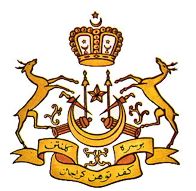
Sultan Muhammad IV ibni Sultan Muhammad III ibni al-Marhum Sultan Muhammad III (1870 - 1920) ist Sultan (سلطان) Kelantan (كلنتن). Er wird ist der Neffe des verstorbenen Sultans und wird von Siam gegen den Anspruch der Brüder des Sultans eingesetzt.
Abb.: Sultan Muhammad IV ibni Sultan Muhammad III ibni al-Marhum Sultan Muhammad III
[Bildquelle: Graham, Walter Armstrong <1868 – 1949>: Kelantan, 1908. -- nach S. 2]
Abb.: Lage von Kelantan (كلنتن)
[Bildquelle: Constables Hand Atlas of India, 1893. -- Pl. 59]
"Sultan Muhammad IV ibni Sultan Muhammad III ibni al-Marhum Sultan Muhammad III, Sultan and Yang di-Pertuan of the State of Kelantan Da’ar ul-Na’im, KCMG (1 January 1913).
- b. at Kota Bharu, 23 May 1870, eldest son of Paduka Sri Sultan Muhammad III ibni al-Marhum Sultan Ahmad, Sultan and Yang di-Pertuan Besar of the State of Kelantan, by his first wife, Tengku Sofia binti al-Marhum Tengku Putih, Tengku Ampuan, eldest daughter of Tengku Puteh ibni al-Marhum al-Marhum Sultan Phaya Long Muhammad, Raja of the State of Patani,
- educ. privately.
- Granted the title of Tengku Sri Indra, 23 September 1890.
- Appointed as Heir Presumptive with the title of Raja Muda 25 July 1898.
- Granted the tile of Phaya Bpakdi Sri Sultan Muhammad Ratna Nuchit Siti Santun Wiwangsa Pia Kelantan by the King of Siam.
- Succeeded on the death of his childless uncle, 17 June 1899.
- Installed as Raja Kelantan and Yang di-Pertuan, with the style of Yang Teramat Mulia, 9 February 1900.
- Granted the title of Phaya Deja by the King of Siam in 1897, and
- prom. to Phaya Bipitpakdi 1900.
- Kelantan was transferred to British Protection, 19 July 1909.
- Crowned as Paduka Sri Baginda Sultan Muhammad IV with the style of Duli Yang Maha Mulia, and granted a permanent salute of 17-guns, 22 June 1911.
- Altered the name of the state to Negeri Kelantan Dar ul-Naim, July 1916.
- Founded the Darjah Kerabat Yang Amat di-Hormatai (Royal Family Order) and the Paduka Mahkota Kelantan al-Muhammad (the Order of the Crown of Kelantan of Muhammad), 1916.
- Rcvd: GC Order of the Crown of Siam (1905).
- m. (first) 1888, Nik Wan Zainab binti Nik Wan Muhammad Amin [Sultana Zainab] (b. 1877; d. at Kota Bharu, 23 July 1928, bur. Royal Cemetery, Kampung Langgar), crowned as Sultana at Istana Balai Besar, Kota Bharu, 15 February 1916, daughter of Nik Wan Muhammad Amin bin Wan ‘Abdu’l gallaran Ngah.
- m. (second) Cik Jarah binte Encik Yusuf.
- He died at the Istana, Kota Bharu, 23 December 1920 (bur. Royal Cemetery, Kampung Langgar)
[Quelle: http://en.wikipedia.org/wiki/Sultan_of_Kelantan. -- Zugriff am 2015-02-28]
1899


Kronprinz Vajiravudh (วชิราวุธ, 1881 - 1925) graduiert an der Royal Military Academy in Sandhurst und kommt bis Herbst 1900 zur Offiziersausbildung zur Royal Durham Light Infantry in Aldershot.
Abb.: Lage von Aldershot
[Bildquelle: OpenStreetMap. -- Creative Commons Lizenz (Namensnennung, share alike)]
1899
Das Department für die Provinzfinanzen (กรมสรรพากรนอก) wird dem Innenministerium unterstellt.
1899
Prinz Damrong [ดำรงราชานุภาพ, 1862 -1943] auf der Tagung der Superindendent Commisioners
"From the beginning, the finding of people who possessed sufficient qualities to be district officers has presented difficulties to superintendent commissioners, and it has grown more difficult as the number of reforms increase. At the beginning, we had to depend on incumbent officials and whomever we found for district officers and had to allow them to carry on haphazardly as before. It was only if we discovered that they had committed misdemeanours or were too old for the job that we replaced them with others who could experiment (with reforms). This has been the case in every monthon [มณฑล]." [Quelle: Tej Bunnag [เตช บุนนาค] <1943 - >: The provincial administration of Siam from 1892 to 1915 : a study off the creation, the growth, the achievements, and the implications for modern Siam, of the ministry of the interior under prince Damrong Rachanuphap. -- Diss. Oxford : St. Anthonys College, Michaelmas Term 1968. -- 429 S., Schreibmaschinenschrift. -- S. 336. -- Faire use]
1899

Abb.: Rama V. als Fotograf, Bangkok, 1899
Abb.: Rama V. als Fotograf, Bangkok, 1899

Abb.: Rama V. fotografiert einen angesehenen Mönch in Wat Rakhang (วัดระฆัง), Bangkok, 1899
1899/1900

Geistliche Erziehungsdirektoren inspizieren die Monthon (มณฑล)
- Phuket (มณฑลภูเก็ต)
- Isan (มณฑลอีสาน)
- Nakhon Ratchasima (มณฑลนครราชสีมา)
- Burapha (มณฑลบูรพา - West-Kambodscha)
Damit sind alle nichtmuslimischen Monthons der zentralen Kontrolle unterstellt mit Ausnahme von
- Phayap (มณฑลพายัพ - Nordsiam)
- Udon (มณฑลอุดร)
Diese beiden Monthon widersetzen sich noch der sprachlichen und ordenshierarchischen Zentralisierung.
1899/1900
13.000 Exemplare des ersten Bands der Rapid Readers [แบบเรียนเร็ว] werden gratis an die Provinzen verteilt. Im folgenden Jahr folgen 15.000 weitere Exemplare.
Abb.: Titelblatt von Rapid Readers [แบบเรียนเร็ว] Bd. 2
1899
Gründung der staatlichen Yupparat School (โรงเรียนยุพราช) in Chiang Mai (เชียงใหม่). Ab 1902 ist Zentral-Thai Unterrichtssprache.
1899
Der König stiftet Stipendien für Studierende der Militärakademie.
1899
Yi Goh Hong (Yi Goh Hong/ยี่กอฮง/郑智勇/Phya Anuwat Rajniyom/พระยาอนุวัตน์ราชนิยม), Lotterie-Pächter, und andere Chinesen stiften das Tio Chew (泰国) Chinese Cemetery in Ban Don (บ้านดอน), Bangkok, zur kostenlosen Bestattung einsamer und mittelloser Chinesen.
Abb.: Lage des Friedhofs
[Bildquelle: OpenStreetMap. -- Creative Commons Lizenz (Namensnennung, share alike)]
1899


Auf Vorschlag des britischen Finanzberaters Charles James Rivett-Carnac (1853 – 1935) wird in den Behörden der Sonntag als Ruhetag eingeführt.
1899

Gründung der protestantischen Missionsstation in Phitsanulok (พิษณุโลก)
Ább.: Lage von Phitsanulok (พิษณุโลก)
[Bildquelle: OpenStreetMap. -- Creative Commons Lizenz (Namensnennung, share alike)]
1899
Pestepidemie in Südwest-Siam. Die ganze Insel Phuket (ภูเก็ต) wird zwei Monate lang unter Quarantäne gestellt.
Abb.: Lage von Phuket (ภูเก็ต)
[Bildquelle: Scottish Geographical Magazine, 1886. -- Public domain]
1899
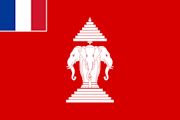
Ganz Laos als wird als eine (bisher zwei) Verwaltungseinheit unter einen Résident Supérieur gestellt. Dieser residiert bis 1900 in Savannakhet (ສະຫວັນນະເຂດ), dann in der neuen Hauptstadt Vientiane (ວຽງຈັນ).
1899


In Kuala Berang (کوالا بيرڠ) (Terengganu - ترڠڬانو) wird eine muslimische Steininschrift (Batu Bersurat Terengganu / باتو برسورت ترڠڬانو) vom 1303-02-22 gefunden. Es ist das älteste archäologische Zeugnis für Islam auf der malaiischen Halbinsel.
Abb.: Terengganu-Steininschrift, Vorderseite
[Bildquelle: Meursault / ms.Wikipedia. -- GNU FDLicense]
Abb.: Lage von Kuala Berang (کوالا بيرڠ)
[Bildquelle: OpenStreetMap. -- Creative Commons Lizenz (Namensnennung, share alike)]
1899 - 1909
Opernartige Lakorn Duk Damban (ละครดึกดำบรรพ์) am Hof von Prinz Narisara Nuwattiwong (สมเด็จพระเจ้าบรมวงศ์เธอ เจ้าฟ้าจิตรเจริญ กรมพระยานริศรานุวัดติวงศ์, 1863 - 1947) sind am Hof sehr beliebt.
1899
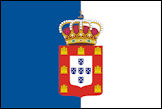
Abb.: Chinesen unter dem Protektorat der portugiesischen Botschaft, Bangkok, 1899
1899

Abb.: Prinzessinnen von Chiang Mai (เชียงใหม่ / ᨩ᩠ᨿᨦᩉ᩠ᨾᩲ᩵), 1899
1899
Abb.: Siamesisches Militär, 1899
1899 - 1909
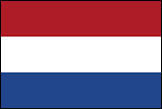
Der niederländische Wasserbauingenieur Homan van der Heide (1865 - 1945) arbeitet - aus Java kommend - in Siam und entwirft ein Bewässerungssystem für Zentralsiam. Seine Pläne werden großteils - zum Schaden Siams - nicht verwirklicht.
Abb.: J. Homan van der Heide, Generaldirektor des Bewässerungsdepartements
[Bildquelle: Twentieth century impressions of Siam : its history, people, commerce, industries, and resources / ed. in chief: Arnold Wright. -- London [etc.] : Lloyds, 1908. -- S. 199]
1899
Abb.: Bangkok: Eröffnung einer Lokalbahnlinie, 1899
1899
Obstpreise in Nakhon Si Thammarat (นครศรีธรรมราช):
"Nach den Berichten des Provinzialgouverneurs von Nakom Sri Tamarasch vom Jahre 1899 kosten auf dem Obstmarkte der gleichnamigen Stadt:
- 1000 Durionen [Durian - Durio zibethinus] 1,6 Bat;
- 1000 Mongostanen [Garcinia mangostana L.] 0,046—0,062 Bat;
- 1000 Langsat [Lansi - Lansium sp.] 0,015 Bat.
Bei so niedrigen Preisen kann sich allerdings ein Obstverkauf in diesen Gegenden unmöglich rentieren."
[Quelle: Dilock <Prinz von Siam> [Diloknobbarath, Prince of Sarnga - พระเจ้าบรมวงศ์เธอ พระองค์เจ้าดิลกนพรัฐ กรมหมื่นสรรควิสัยนรบดี] <1884 - 1912>: Die Landwirtschaft in Siam : ein Beitrag zur Wirtschaftsgeschichte des Königreichs Siam. -- Leipzig : Hirschfeld, 1908. -- 215 S. -- Zugleich: Univ. Tübingen, Diss. 1907. -- S. 157.]
Abb.: Durian (Durio zibethinus) / von Hoola Van Nooten (fl 1863-1885)
[Bildquelle: Wikimedia. -- Public domain]
Abb.: Mangostan (Garcinia mangostana L.)
[Bildquelle: Prenn / Wikimedia. -- Creative Commons Lizenz (Namensnennung, share alike)]
Abb.: Langsat [Lansi - Lansium domesticum]
[Bildquelle: Flora de Filipinas 1883 / Wikimedia. -- Public domain]
1899

Die Haroon Moschee (มัสยิดฮารูณ) wird am gegenwärtigen Standort gebaut. 1881 war sie aufgrund des Testaments von Haroon Bafadel an einer anderen Stelle erbaut worden, musste aber dem Royal Custom House weichen.
Abb.: Lage der Haroon Moschee (มัสยิดฮารูณ)
[Bildquelle: OpenStreetMap. -- Creative Commons Lizenz (Namensnennung, share alike)]
1899
Bangkok: Kämpfe zwischen zwei Gruppen / Gangs von Pathanen aka Paschtunen (پښتانه, aus britisch Indien: heutiges Pakistan)
Abb.: Heimatgebiete der Pathanen aka Paschtunen (پښتانه)
[Bildquelle: Lord Mota / Wikimedia. -- Public domain]
1899 - 1906
Es erscheint die Zeitung
ตุลวิภาคพจนกิจ ["Abwägende Worte"] von เทียนวรรณ aka. ต.ว.ส. วัณณาโภ [Thianwan aka. T. W. S. Wannapho , 1842 - 1915]
Er kämpft darin für eine Besserstellung der Frauen.
Abb.: Hefttitel
1899 - 1908

Es erscheint:
Smith, Samuel J. <1820 - ca. 1909>: A comprehensive Anglo-Siamese dictionary. -- Bangkok : Bangkolem, 1899-1908. -- 5 Bde. (4512 S.)
Der US-Bürger Samuel J. Smith übersetzt darin Webster's Encyclopedic Unabridged Dictionary of the English Language (1828) ins Thai.
"Als Beispiel, wie kolossal der Wert des Grund und Bodens gestiegen ist in Bangkok, führte Whikanet [Adjutant von F. Schaefer] die Geschichte des alten Smith [Samulel J. Smith, 1820 - ca. 1909] an. Der alte Smith ist einer der ältesten Leute in Bangkok, gegen 90 Jahre alt. Er hat sein ganzes Leben in Bangkok zugebracht, ist ein richtiges Original und weiß sehr interessant von alten Zeiten zu erzählen. Die ganze neuere Entwicklung Siams hat er mitgemacht. Wenn man ihn hört, sagt Whikanet, dann ist es, als ob ein Toter zu einem spräche, der aus dem Grabe auferstanden ist. Der alte Smith ist ganz klein, nur wenig mehr als einen Meter lang, aber seine Frau ist noch kleiner. Die beiden Leute haben nur ein Bett, ein ganz riesiges Bett, wie man sie sonst nur in alten Fürstenschlössern findet. Das Bett ist außerdem viel zu hoch für das alte Ehepaar. Deshalb haben sie sich zwei Bänke machen lassen; über diese Bänke hinweg kriechen sie dann jedes auf seiner Seite in das Bett. Einmal waren Gamois [ขโมย], d.h. Diebe, im Haus; die hatten es sehr bequem. Sie rückten die beiden Bänke ab und revidierten nun vor den Augen des alten Smith Tische und Schränke. Der Alte schimpfte wie ein Rohrspatz, aber er konnte von seinem Turmbette nicht herunter. Das Lebenswerk des alten Smith ist ein englisch-siamesisches Lexikon, dessen Umfang in ebensolchem Missverhältnis zu der Körpergröße des alten Smith steht, wie der des Bettes. Es ist vielleicht das größte Lexikon der Welt; denn die siamesische Sprache verfügt über einen ungeheuren Wortschatz. Vierzig Jahre hat der alte Smith an diesem Lexikon gearbeitet. Als er endlich fertig war, hat er nur eine beschränkte Zahl von Exemplaren drucken lassen können, nur 100 sagt man, weil das kolossale Buch auch kolossale Kosten machte. Von den 100 Exemplaren hat er den größten Teil an den König und andere hohe Würdenträger verschenkt. Da diese nun aber gleichzeitig die einzigen in Bangkok sind, die sich solch ein teures Lexikon leisten können, sitzt der alte Smith mit dem Rest seiner Exemplare da und eine zweite Auflage kann nicht gedruckt werden, weil es an Abnehmern mangelt. Das ist die Tragödie des Lexikons. Hunger braucht der alte Smith deshalb aber nicht zu leiden. Denn er hat dafür ein glänzendes Geschäft mit seinem Grundstück gemacht. In jungen Jahren hat er sich am Menam ein Grundstück für 4000 Tikal gekauft. Es liegt außerordentlich günstig und ist sehr groß. Jetzt hat man ihm für das Grundstück mit allem was darauf steht 350.000 Tikal geboten, er will es aber nicht unter 400.000 hergeben. Es ist 60 Jahre her, dass der Alte das Grundstück gekauft hat, und da ich mich nicht mehr solange hier einrichten kann, kann ich leider das Experiment nicht nachmachen." [Quelle: Schaefer, Friedrich <1868 - 1914>: Siamesisches Tagebuch : ein deutscher Arzt in Bangkok 1909 - 1912 / hrsg. Walter Schaefer-Kehnert [1918 - 2006]. -- Bonn : Deutsch-Thailändische Gesellschaft, 1991. -- 303 S. : Ill ; 21 cm. -- (Publikationen / Deutsch-Thailändische Gesellschaft ; 18). -- ISBN 3-923387-17-2. -- S. 125]
1899 - 1903

Conrad Adam Leopold von Saldern (1847 - ) ist deutscher Ministerresident in Siam.
1899


"Der deutsche Ministerresident hatte Siam natürlich nachdrücklich empfohlen, sich nicht in Abhängigkeit von fremden Geldgebern zu begeben und Eisenbahnen nur in dem Maße zu bauen, wie sie sich aus Steuermitteln ohne Aufnahme einer Anleihe finanzieren ließen. Dies sahen der König und die Minister, die angesichts des stetig wachsenden Einflusses der britischen Berater und vor allem des Aktionsdranges Rivett-Carnacs [Charles James Rivett-Carnac (1853 – 1935), britischer Finanzberater] besorgt waren, ganz ähnlich. Aus diesen Gründen verzichteten sie auf eine Anleihe, und auch das von Rivett- Carnac vorgeschlagene Railway Board wurde zwar eingerichtet, doch gehörten ihm weder europäische Berater noch Bankenvertreter an." [Quelle: Petersson, Niels P.: Imperialismus und Modernisierung : Siam, China und die europäischen Mächte 1895 - 1914. -- München : Oldenbourg, 2000. -- 492 S. ; 25 cm. -- (Studien zur internationalen Geschichte ; Bd. 11). -- ISBN 3-486-56506-0. -- Zugl.: Hagen, Fernuniv., Diss., 1999. -- S. 107]
1899

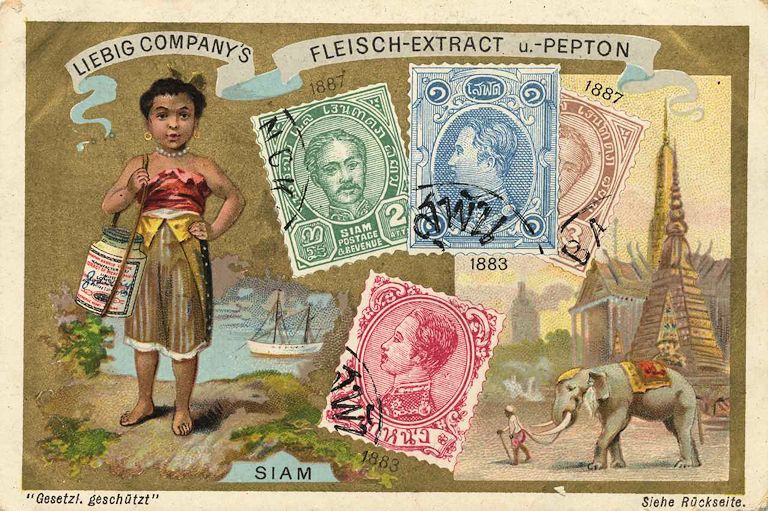
Abb.: Briefmarken Siam
[Bildquelle: Liebig's Sammelbilder, 1899]
1899

Es erscheint:
Hesse-Wartegg, Ernst von <1854 - 1918>: Siam das Reich des weißen Elefanten. -- Leipzig : Weber, 1899. -- 252 S. : Ill. ; 26 cm.
Abb.: Titelblatt
1899

Es erscheint:
Bradley, Dan F. (Dan Freedman) <1857-1939>: Simo : a romance of the court of Siam. -- Chicago : Church Press, 1899. -- 80 S. -- Über Simo Wichai (สีโหม วิชัย), 1869-1938.
1899

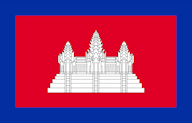
Prinz Sisowath (ព្រះបាទស៊ីសុវតិ្ថ, 1840 - 1927) von Kambodscha bewegt einen Mönch, der früher Mahanikay (Mohanikay / មហានិកាយ / มหานิกาย) war und jetzt Thammayut Nikay (Thommayut Nikay / ធម្មយុត្តិក និកាយ / ธรรมยุติกนิกาย) ist, das Dorfkloster, dessen Abt er ist, in ein Thammayut-Kloster umzuwandeln. Das führt zu Konflikten in diesem Dorf. Sisowath, ein eifriger Unterstützer der Thammayut, möchte, dass die Religion sich verbessert.
1899

Es ersceint:
Saussure, Léopold de <1866 - 1925>: Psychologie de la colonisation française : dans ses rapports avec les sociétés indigènes. -- Paris : Alcan, 1899. -- 311 S. ; 17 cm
Abb.: Titelblatt
"C’est Gustave Le Bon qui, le premier, a exprimé, d’une manière générale1, le rôle prépondérant du caractère héréditaire dans l'évolution des peuples et montré que l'acquisition de caractères mentaux communs crée de véritables « races psychologiques ». Son œuvre, qui apparaîtra plus tard comme capitale, est naturellement peu appréciée par ses compatriotes puisqu'elle est en désaccord complet avec leurs conceptions." 1 Lire notament Les lois psychologiques de l'evolution des preuples ; in-12 de la Bibliotheque de philosophie contemporaine (F. Alcan) [Le Bon, Gustave, <1841-1931>: Les lois psychologiques de l'évolution des peuples. -- Paris : Alcan, 1894. -- 176 S. ; 19 cm. -- (Bibliothèque de philosophie contemporaine)]
[a.a.O., S. 14]
"Léopold de Saussure (30 May 1866 – 30 July 1925) was a Swiss-born French sinologist, pioneering scholar of ancient Chinese astronomy, and officer in the French navy. After a naval career which took him to Indochina, China, and Japan, he left the service and devoted the rest of his life to scholarship. He was most famous for his studies of ancient Chinese astronomy. He was the younger brother of Ferdinand de Saussure (1857 - 1913), the pioneering linguist and semiotician, and René de Saussure (1868 - 1943), a Swiss Esperantist and mathematician.
CareerLéopold de Saussure was born in Switzerland, just outside Geneva, in the hamlet, Creux de Genthod. His family were Protestants with roots in Lorraine, France who had come to Geneva after the revocation of the Edict of Nantes in 1588. His father, Henri Louis Frédéric de Saussure (1829 - 1905), was a mineralogist, entomologist, and taxonomist and a constant traveler and explorer who wrote treatises on the insects of Africa and had an encyclopedic range of interests. [1]
From his early teens de Saussure set out to make a career in the navy, an undertaking which one historian called "a somewhat problematic undertaking in Switzerland." Saussure, with his father's permission, became a French citizen in order to enter the École Navale, and in 1885 went to sea as a cadet.[2] In 1887, he successfully demanded admission to the Ecole des Langues orientales vivantes in Paris.
He spent the years 1889-1891 in Indochina, then a French colony, as well as in Japan, but mainly in China, where he served on the gunboat Aspie, which cruised the Yangtze River. de Saussure gathered not only linguistic experience, particularly in Vietnamese, but a stock of anecdotes and ideas on Asian history and writings, most of which he later abandoned, however. He took part in the French campaign in Dahomey before family concerns obliged him to resign his commission. [3]
On his return to France, he applied his energies entirely to research. After publishing an article on Korea, he published his first major work, Psychologie De La Colonisation Française (1899). The volume offered an analysis of the assimilation of the French language among colonialized peoples. He echoed some of the linguistic concepts of his brother, Ferdinand, but subscribed, as Ferdinand did not, to the concept of a "psychological race" modeled on the concept "historical race" offered by Gustave le Bon (1841 - 1931). de Saussure argued that both the French and Spanish empires would dissolve because they did not recognize the unbridgeable divisions between the superior and lower races, while his linguist brother did not view racial differences as absolute or predetermined.[4]
In the years from 1899 to 1922, de Saussure published dozens of articles, especially in the Paris journal 通報 = T'oung Pao, the leading outlet for sinology in Europe. The subjects included ancient Chinese astronomy, calendars, zodiac, as well as the influence of ancient middle-eastern cultures on China. He argued, however, that Chinese astronomy influenced Babylonian astronomy in the face of those who assumed that China must have been influenced from the outside. A group of these articles were reprinted after his death. [5]
de Saussure died 30 July 1925 in Geneva, after a mysterious illness confined him to bed for almost ten years.[3]
Scholarly contributionsde Saussure, since he had practical experience as a sailor, was able to use his knowledge as a practical navigator to show that even James Legge (1815 - 1895) and other well-known sinologists had not correctly understood the astronomical references in such works as the Shujing (書經). Joseph Needham (1900 - 1995), the historian of Chinese science, calls Saussure's long series of papers "still indispensable" and says that he possessed "considerable sinological knowledge," though not as much as some."
[Quelle: https://en.wikipedia.org/wiki/L%C3%A9opold_de_Saussure. -- Zugriff am 2016-02-26]
1899


Antichinesische Karikatur ("Die gelbe Gefahr") in den USA:
Abb.: "The yellow terror in all his glory", 1899
[Bildquelle: Wikimedia. -- Public domain]
1899

Beispiel für die deutsche Kanonenbootdiplomatie: S. M. Kanonenboot Iltis (1898) trifft im deutschen Stützpunkt in China, Tsingtau (青島 - Qingdao), ein. Es wird u.a. zur Unterwerfung des Boxeraufstands eingesetzt werden.
Abb.: S. M. Kanonenboot Iltis (1898), 1902
[Bildquelle: Wikimedia. -- Public domain]
Abb.: Lage von Tsingtau (青島 - Qingdao)
[Bildquelle: OpenStreetMap. -- Creative Commons Lizenz (Namensnennung, share alike)]
Abb.: Postkarten-Gruß aus Tsingtau, 1899-11-14
[Bildquelle: Wikimedia. -- Public domain]
1899

London: der schottische Arzt Patrick Manson (1844 - 1922) gründet die London School of Tropical Medicine, die bedeutendste Institution der Tropenmedizin.
Abb.: Labor der London School of Tropical Medicine, 1910
[Bildquelle: Wellcome Images. -- Creative Commons Lizenz (Namensnennung, keine kommerzielle Nutzung)]
1899

Elberfeld: die Farbenfabriken vorm. Friedr. Bayer & Co bringen Aspirin als Rheumamittel auf den Markt.
Abb.: Aspirin, 1899
[Bildquelle: Bayer AG / Wikipedia. -- Creative Commons Lizenz (Namensnennung, share alike)]
1899


Der Norddeutsche Lloyd erwirbt die Küstendampfschiffe der Scottish Oriental Steamship Company und wird damit Monopolist für den Schiffsverkehr zwischen Swatow (汕頭, Shàntóu) und Bangkok.
Abb.: Lage von Swatow (汕頭, Shàntóu)
[Bildquelle: CIA. -- http://www.lib.utexas.edu/maps/middle_east_and_asia/southeast_asia_ref_2007.jpg. -- Zugriff am 2012-02-04. -- Public domain]
Abb.: Küstendampfer Kedah, 1900 von East Indian Ocean SS Co. an den Norddeutschen Lloyd verkauft, im Verkehr ab Bangkok eingesetzt, 1905 nach Osaka verkauft
[Bildquelle: Kludas (1998). -- S. 77]
1899

USA: Die Otis Elevator Company baut den Prototypen einer Rolltreppe.
Abb.: Hundert Jahre später sind Rolltreppen in Thailands Shopping Centers allgegenwärtig, Siam Paragon, Bangkok, 2007
[Bildquelle: Metthew Klein. -- http://www.flickr.com/photos/41162375@N00/628123339. -- Zugriff am 2013-08-25. -- Creative Commons Lizenz (Namensnennung, keine kommerzielle Nutzung, keine Bearbeitung)]
1899-01ff.
Schulinspektion in den Monthons (มณฑล) durch Erziehungsdirektoren (Mönche):
"Of the eleven monthon [มณฑล] surveyed in 1899, the directors had sufficient time to make relatively complete surveys in only three, Krungthep [มณฑลกรุงเทพ] (the provinces surrounding Bangkok), Chanthaburi [มณฑลจันทบุรี], and Prachinburi [มณฑลปราจีนบุรี], all of which were relatively compact and had well-developed communications. In other monthon, such as Chumphon [มณฑลชุมพร], Nakhon Sawan [มณฑลนครสวรรค์], Ratburi [มณฑลราชบุรี], and Nakhon Chaisi [มณฑลนครชัยศรี], the directors were able to visit only the main population centers, and could survey only a portion of the monasteries. Fragmentary as they were, however, the reports of the latter half of 1899 began to make clear the proportions of the problems with which the program had to deal. The directors made no attempt to investigate the large numbers of village monasteries in which no instruction whatever was offered and which later surveys were to reveal, but spoke more generally of the better-developed education of provincial towns and district centers. What they found was an improvement on the education of the seventeenth century, for they mentioned having seen the old textbook Chindamani [จินดามณี] in only one monastery. It had been supplanted almost everywhere by the early nineteenth-century Pathom k ka [ปฐม ก กา] which except in major towns must have been available only in manuscript form. Excluding the provinces adjacent to Bangkok, the educational developments of the eighties and nineties had made virtually no impact, and only a few more centrally located towns possessed even the printed Munlabot banphakit [มูลบทบรรพกิจ]of the seventies. Of interest is the information the directors provided concerning the distribution of more recent teaching materials such as the Munlabot and the Rapid Readers [แบบเรียนเร็ว]. Outside of monthon Krungthep, they were found in four situations:
- in the most important of the central provincial towns, and particularly in Phetburi [เพชรบุรี], where the westernized Bunnags [บุนนาค] long had held forth and where the monastery schools long had had to compete with strong missionary schools;
- in areas where there had been government schools in the eighties, such as Suphanburi [สุพรรณบุรี] and some areas of monthon Ratburi [มณฑลราชบุรี];
- in the major commercial centers, such as the tin center of Phuket [ภูเก็ต] in the south and some of the teak and rice towns of the Central Plains such as Tak [ตาก] and Uthaithani [อุทัยธานี], areas of good communications and strong Western influences; and
- in the monasteries of the Thammayut sect [ธรรมยุติกนิกาย], judging from the evidence on monthon Ratburi [มณฑลราชบุรี], probably at least partly because of the necessarily stronger links between these monasteries of a new sect and the sect’s headquarters in Bangkok.
Intriguing are the figures given by Phra Methathammarot on the relative satisfaction of monks and laymen alike with traditional education in monthon Nakhon Sawan [มณฑลนครสวรรค์]. He reported that at least one fourth of all the monks and laymen with whom he had conversed desired a change in the educational patterns. Who they were he does not say, nor are his figures necessarily representative; but other monks traveling in other provinces provided similar indications of the presence of at least a minority who desired educational changes for one reason or another, and it was at least partly on the basis of their presence in some localities that the directors in each monthon recommended the founding of new schools at specified monasteries and distributed to those monasteries the books they had brought from Bangkok."
[Quelle: Wyatt, David K. <1937 - 2006>: The politics of reform in Thailand : education in the reign of King Chulalongkorn. -- New Haven : Yale UP, 1969. -- 425 S. : Ill. ; 23 cm. -- (Yale Southeast Asia studies ; 4). -- SBN 300-01156-3. -- S. 243ff.]
Bis 1899-09 gründen die Erziehungsdirektoren in den Provinzen 177 neue Schulen.
1899-01-01
Phraya Wisut Suriyasak (พระยาวิสุทธ์สุริยาศักดิ์ , 1867 - 1916) legt dem König ausführliche Vorschläge zum Aufbau von Berufsschulen vor. Die Vorschläge werden 1899-08 ad acta gelegt, weil man keinen geeigneten Leiter für das Vorhaben findet.
1899-01-02

Siam Free Press (vgl. 1898-01-05):
Abb.: Titelleiste 1906
Abb.: Lage von Paklai [ເມືອງປາກລາຍ], Kentao [Kenthao - ເມືອງແກ່ນທ້າວ / เมืองแก่นท้าว] und Luang Prabang [ຫຼວງພະບາງ]
[Bildquelle: OpenStreetMap. -- Creative Commons Lizenz (Namensnennung, share alike)]
"FRANCE AND SIAM
Serious Trouble on the Mekhong
Siamese Troops on the French Frontier
The French Flag Fired on.Attempt to murder M. Macey the Representative of the Republic in Paklai [ເມືອງປາກລາຍ].
The news that reaches us today by the Saigon mail is of the gravest character. To summarize it briefly the Siamese are accused of having broken the treaty of 1893 in a most flagrant manner. Early in December Monsieur Macey, the French Commissioner of Paklai, a town on the Mekhong [ແມ່ນ້ຳຂອງ] about a day’s journey below Luang Prabang [ຫຼວງພະບາງ], received intelligence that a strong body of Siamese troops had entered the 25 kilometres zone and were encamped at a place called Kentao [Kenthao - ເມືອງແກ່ນທ້າວ / เมืองแก่นท้าว] which is situated within the territory in question. He at once marched to the spot and ordered the Siamese Commandant to retire. His answer was a volley which killed the elephant on which he rode, and wounded many of his attendants, so that they all came simultaneously to the conclusion that discretion was the better part of valour - and fled.
The affair is extremely serious, and we can only hope that it will be settled by diplomatic means. We shall confine ourselves today to giving the version of the affair which appears in the Straits Press and in the Saigon Press respectively.
What they say in Saigon
An Ultimatum Necessary.
No further Trifling.The ‘Mekong’ of December the 29th speaks as follows:
"We have given a few days ago news which reached us through a French source of a serious affair which has taken place in the Laos; our Bangkok correspondent sends us today full particulars of this incident which seems to be of the greatest gravity, and which will, we hope, decide the French Government on bringing the Siamese question to an end once and for all.
Here is how Mr. Macey, Commissaire of the French Government at Paklai and a member of the famous Pavie mission, came to be brutally attacked by the Siamese.
The treaty of 1893 stipulated that a neutral zone twenty-five kilometres wide should be established on the right bank of the Mekong, and that within this zone neither the French nor the Siamese Governments were to maintain any armed force. The Kingdom of Luang Prabang is situated within this zone, and should not accordingly be occupied by Siamese troops. Nevertheless the Government at Bangkok began some time back to send troops under one disguise or another into this territory; and growing bolder as it noticed the weakness of the French, it sent regular forces with arms and baggage.
Informed of these facts, M. Delcassé [Théophile Pierre Delcassé, 1852 - 1923], the French Minister for Foreign Affairs, gave formal notice in November last that these proceedings constituted a flagrant breach of the treaty of 1893 and must at once cease.
It was in pursuance of these orders that M. Macey went on the 1st December to Ken Tao, a Siamese military post situated in the neutral zone and only about fifteen kilometres from the bank of the Mekhong. He was accompanied by a few men and was unarmed. He informed the commandant of the Siamese forces that their presence in the place was contrary to the stipulations of the treaties and that they had got to retire. Seeing the numerical inferiority of M. Macey’s escort, seeing also that they were unarmed the Siamese commander refused to obey the command, and indulged in grossly insulting language towards the French people and their representative M. Macey.
A second time M. Macey - who had preserved sufficient sang froid to remain calm in spite of the insulting attitude of the Siamese official-ordered the latter at once to retire. The only answer he got this time was a volley. His elephant was riddled with balls and but for a ‘serviette’ stuffed with papers which he carried in his breast pocket, a Siamese bullet would have gone through the chest of the French leader.
Finding it impossible to resist, M. Macey took to flight and his party was dispersed, leaving two of their number dead on the field. M. Macey had to hide all day long in the jungle and it was only when night came on that he was able to cross the Mekhong and take refuge in a native village where he remained hidden all day.
The day after, he reached a French outpost and reported the cowardly attempt that had been made on his life. The news was at once communicated to the commandant supérieur of the Haut Laos who received at the same time a telegram from Bangkok which said that Siamese soldiers had been attacked by the French! Such is the sublime audacity of our neighbours!
An enquiry has been set on foot and is now in progress, but happily there can be no doubt as to its outcome.
Two alternatives
In face of the material proofs we now have of the violation of the treaty and of the attempt on the life of a French official a tremendous indemnity must be insisted on. We rely on the energy of our representative at Bangkok to obtain it. If it is refused our claims will be backed up by a few gunboats and several companies of tirailleurs and militia.
In short, the series of clearly premeditated insults which France has suffered from Siam for some time past, the seizure of our protégés, the pillage of the church at Bangwek [บางแวก, 1898-09-19], the brutal murder of two French subjects at Ban Den [บ้านเด่น ?] by Siamese soldiers - finally the attempted assassination of M. Macey - all these incidents have filled the cup, and it is to be hoped that France in dealing with Siam will now renounce diplomatic arguments."
[Zitiert in: Manich Jumsai [มานิจ ชุมสาย] <1908 - 2009>: History of Laos. -- 2. rev., enl. ed. -- Bangkok : Chalermnit, 1971. -- 325 S. : Ill. ; 27 cm. -- Einbandtitel: A new history of Laos. -- S. 229ff.]
1899-01-05


Der britische Gesandten George Greville an den britischen Premierminister und Außenminister Robert Arthur Talbot Gascoyne-Cecil, 3. Marquess of Salisbury (1830 - 1903):
"It so happened that Mr. Macey, the French Commissioner at Paklai [ເມືອງປາກລາຍ], was travelling outside the reserved zone and in Siamese territory proper with the evident purpose of intimidating the provincial authorities and usurping the power of a real consul. He came across a few gendarmes and ordered them to deliver up their guns to him. This order they naturally refused to obey- whereupon Mr. Macey and his companion official of Luang Prabang [ຫຼວງພະບາງ] who was travelling with him fired at them from his elephant. After that the gendarmes returned the fire and hit Mr. Macey’s elephant which at once bolted into the forest followed by the rest of the party." [Zitiert in: Manich Jumsai [มานิจ ชุมสาย] <1908 - 2009>: History of Laos. -- 2. rev., enl. ed. -- Bangkok : Chalermnit, 1971. -- 325 S. : Ill. ; 27 cm. -- Einbandtitel: A new history of Laos. -- S. 228]
1899-01-06 - 1905-11-18
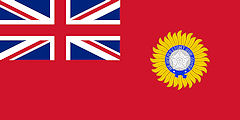
The Lord Curzon of Kedleston (1859 - 1925) ist Governor-General and Viceroy of India
Abb.: "Persia and India": The Lord Curzon of Kedleston / von Leslie Ward (1851 - 1922)
[Bildquelle: Vanity Fair. -- 1892-06-18 / Wikimedia. -- Public domain]
1899-01-07


Abb.: "It ought to be a happy new year : uncle Sam and his English cousin have the world between them" / von Victor Gillam (1858 - 1920)
[Bildquelle: The Judge. -- 1899-01-07]
1899-01-21

Der König an Phraya Wisut Suriyasak (พระยาวิสุทธ์สุริยาศักดิ์ , 1867 - 1916)
"The king found it ignominious that the Bangkok police force was compelled to rely upon Indian men and European officers. The practice of hiring foreign advisers, thought the king, was dangerous and at best only an expedient. He was willing to acknowledge their ability, their honesty and loyalty, but ultimately they had to be considered "eating friends and not dying friends,"
and no more could be expected of them. The trouble with employing foreign advisers, he explained to Phraya Wisut, was that too often they tended to become more than advisers and took over the departments to which they had been assigned, because the Thai with whom they worked were capable neither of controlling them nor of learning from them. The king was acutely aware of the
"difficulties in China concerning the hiring of Westerners, which has almost become an 'international question’ and will spread to our country."
For the dearth of good men and the dangers of employing foreign advisers, there was, he argued, only one solution:
"the education of the Thai, who are the rulers [or owners, chao] [เจ้า] of the country."
The king castigated the Ministry of Public Instruction for failing to achieve this solution, primarily because it persisted in blindly borrowing forms and practices from the West, which he likened to the man who, on moving into the jungle, decided to build a brick house and set about fashioning mortar and bricks from the earth. What was needed, he explained, was not bricks but rather huts and wooden shelters which could be constructed quickly and improved later; and Chaophraya Phatsakorawong [Unterrichtsminister Phraya Phatsakorawong (Phon Bunnag) - พระยาภาสกรวงศ์ (พร บุนนาค), 1849–1920] was not the man for such a temporizing course. Until educational development caught up with the kingdom’s manpower needs, the shortage of trained men and the necessity of employing foreign advisers would continue. Meanwhile, two general lines of approach could be taken.
- First, Prince Wachirayan’s [Mönchs-Prinz Vajirañāṇavarorasa -วชิรญาณวโรรส, 1880 - 1921] program of provincial education could set about providing a broader base of mass elementary education, while the ministry was allowed to develop upper primary and secondary education in Bangkok, and a "civil service school" could be established to take the products of these schools and turn them into civil servants with a modicum of expertise in the shortest time possible.
- Second, steps had to be taken to prepare for the reform of the Ministry of Public Instruction. The king had more than a general conviction that this was needed: he had a clear idea of who was to accomplish it, and this person was none other than Phraya Wisut. Certainly, he explained, Wisut’s position as a diplomatic representative of the Thai government was an important one, but
"if we have domestic chaos, how can our foreign position improve?""
[Quelle: Wyatt, David K. <1937 - 2006>: The politics of reform in Thailand : education in the reign of King Chulalongkorn. -- New Haven : Yale UP, 1969. -- 425 S. : Ill. ; 23 cm. -- (Yale Southeast Asia studies ; 4). -- SBN 300-01156-3. -- S. 256f.]
1899-01-23

Ausrufung der ersten Philippinischen Republik (Unang Republika ng Pilipinas)
1899-01-24

Mönchs-Prinz Vajirañāṇavarorasa (วชิรญาณวโรรส, 1880 - 1921):
"His Majesty could think of no better way to accomplish these ends [of educating the whole country] than by supporting the whole Sangha [พระสงฆ์] and extending to it the Royal Patronage so that it will have the strength to offer religious and academic instruction to the Buddhist population much more fully than before." [Übersetzung: Wyatt, David K. <1937 - 2006>: The politics of reform in Thailand : education in the reign of King Chulalongkorn. -- New Haven : Yale UP, 1969. -- 425 S. : Ill. ; 23 cm. -- (Yale Southeast Asia studies ; 4). -- SBN 300-01156-3. -- S. 240, Anm. 14]
1899-02
Vorschriften bezüglich der Provinzverwaltung (ข้อบังคับปกครองหัวเมือง)
"The Ministry of the Interior hoped to use the Regulations of 1899 as the means to centralize the provincial administration. It wanted to make real the earlier law of 1802, which had theoretically but not actually centralized the provincial administration. It gave itself and its representatives in the provinces the weapons to undermine and to terminate whatever remained of the provincial administration's independent existence. The Ministry, first of all, reemphasized the point that the governorships were not semi-hereditary and that it was the King who had the sole right to appoint governors. It symbolically stressed this point by announcing that the King would no longer make any governor Phu samret ratchakan [ผู้สัมฤทธิ์ราชการ], which title had enabled the holder to have powers of life and death over the people, but that he would henceforth designate a governor without such powers as phu wa ratchakan [ผู้ว่าราชการ]. It deprived the provincial government of much of his former patronage. The Ministry itself announced that it would take over the appointment of the deputy governor (palat [ปลัด]), the public prosecutor (yokkrabat [ยกกระบัตร]), and the revenue officer (phu chuai [ผู้ช่วย]). It .made the superintendent commissioners responsible for taking over the appointment of five other officials, two of whom (cha muang and saralek) were destined to be the governor's assistants, one (satsadi) the deputy governor's, one (phaeng) the public prosecutor's, and the last (supphamattra) the revenue officer's assistant. The Ministry planned to leave the governor with the minimum patronage of the appointment of the two most junior provincial officials and the clerks. It even qualified this last vestige of patronage, for it allowed the governors to make these appointments only with the superintendent commissioners' approval. Furthermore, it deprived the provincial nobility of their traditional sources of livelihood, for it forbad them to engage themselves in tax-farms or in business. It insisted that officials should have no other sources of income apart from their salaries. The new system of administration accommodated the provincial nobility, who did not wish to abandon their commercial interests or to undertake new duties or to accept fixed salaries, by turning them into powerless 'special advisory officials' called variously krommakan thi pruksa [กรมการที่พฤกษา] or krommakan phiset [กรมการพิเศษ] or krommakan nok thamniap [กรมการนอกทำเนียบ].
The Ministry of the Interior defined the functions and powers of the provincial officials with precision in the Regulations of 1899. First of all, it firmly placed the governors under the superintendent commissioners. It planned to send all directives to the superintendent commissioners, who in turn were supposed to pass them on to the governors for implementation at the provincial and lower levels of the administration. It ordered the governors to submit monthly and annual reports to the superintendent commissioners. It told the governors, deputy governors, and revenue officers to spend at least sixty days of each year in inspecting the provinces. They should visit each district at least twice a year, each sub-district at least once, and each village as often as possible. Furthermore, it urged the governors to foster the existing monastery schools and to found state schools, so that the administration would be provided in the future with literate recruits. The Ministry, having burdened the governors with duties, went on to circumscribe their powers. It deprived the governors of absolute control over their subordinates, for it compelled them to inform the superintendent commissioners within seven days of their dismissal of any official appointed by either the superintendent commissioners or the Ministry of the Interior."
[Quelle: Tej Bunnag [เตช บุนนาค] <1943 - >: The provincial administration of Siam from 1892 to 1915 : a study off the creation, the growth, the achievements, and the implications for modern Siam, of the ministry of the interior under prince Damrong Rachanuphap. -- Diss. Oxford : St. Anthonys College, Michaelmas Term 1968. -- 429 S., Schreibmaschinenschrift. -- S. 191ff. -- Faire use]
1899-02

Paul Doumer (1857 - 1932), Generalgouverneur von Französisch-Indochina, fordert das Ende der Verhandlungen Frankreichs mit Siam und die militärische Besetzung Ostsiams, denn
„il serait puéril de chercher encore, par des moyens diplomatiques, à rétablir notre influence qui est aujourd’hui complètement éliminée". [Zitiert in: Petersson, Niels P.: Imperialismus und Modernisierung : Siam, China und die europäischen Mächte 1895 - 1914. -- München : Oldenbourg, 2000. -- 492 S. ; 25 cm. -- (Studien zur internationalen Geschichte ; Bd. 11). -- ISBN 3-486-56506-0. -- Zugl.: Hagen, Fernuniv., Diss., 1999. -- S. S. 118]
1899-02/03

Der britischen Gesandten George Greville an den britischen Premierminister, Robert Arthur Talbot Gascoyne-Cecil, 3. Marquess of Salisbury (1830 - 1903):
"Greville klagte, der britische Einfluss sei zwar in stetigem Wachstum begriffen, doch die siamesische Regierung habe Angst davor bekommen und versuche, die anderen Mächte gegen Großbritannien auszuspielen: „The policy of Siam is to maintain its independence by offering special facilities to the European Powers to acquire large interests in Siam and when these interests are acquired to play off the Powers against each other."
Dies sei um so bedrohlicher, als Siam an der Schwelle neuer und vielversprechender Entwicklungsanstrengungen stehe:
„Siam is now ripe for a great development of its material resources and it is intended to push forward this development by every means."
Das Land werde mehr und mehr europäisches Kapital, mehr und mehr europäische Berater brauchen; wenn sich Siam nun verstärkt an dritte Mächte wende, könnten diese schon in wenigen Jahren Großbritannien seine Stellung streitig machen. Greville argumentierte, es sei
„the obvious policy of Great Britain to foster the growth of a well governed and prosperous Siam as a buffer State between Burma and French Indo China."
Wegen dieser strategischen Bedeutung Siams könne man es nicht zulassen, dass das Land die Hilfe dritter Mächte in Anspruch nehme, um „prosperous and well governed" zu werden. London müsse, so meinte der Gesandte, Bangkok und den anderen Mächten in Erinnerung bringen
„that British influence is paramount in Siam, and that Her Majesty’s Government intend that it should remain so.""
[Quelle: Petersson, Niels P.: Imperialismus und Modernisierung : Siam, China und die europäischen Mächte 1895 - 1914. -- München : Oldenbourg, 2000. -- 492 S. ; 25 cm. -- (Studien zur internationalen Geschichte ; Bd. 11). -- ISBN 3-486-56506-0. -- Zugl.: Hagen, Fernuniv., Diss., 1999. -- S. 107]
1899-02


Es erscheint das Gedicht des britischen Autors:
Kipling, Rudyard <1865 - 1936>: The white man's burden : the United States and the Philippine Islands. -- In: McClure's Magazine <New York, USA>. -- 1899-02
Abb.: The white man's burden / von Victor Gillam (1858 - 1920)
[Bildquelle: The Judge. -- 1899-04-01]
Abb.: The white man's burden / von William Henry Walker (1871 - 1938)
[Bildquelle: Life. -- 1899-03-16]
Abb.: Author of "The white man's burden" reporting the Boer war
[Bildquelle: Chicago Tribune. -- 1899/1902]
Take up the White Man's burden, Send forth the best ye breed
Go bind your sons to exile To serve your captives' need;
To wait in heavy harness, On fluttered folk and wild--
Your new-caught, sullen peoples, Half-devil and half-child.Ergreift des weißen Mannes Bürde schickt eure Besten her Bindet eure Söhne ans Exil um den Bedürfnissen euerer Gefangenen zu dienen;
in schwerer Rüstung sollen sie warten,um die Wilden zu verschrecken Eure neugefangenen verdrossenen Völkern, halb Teufel und halb Kind. Take up the White Man's burden, In patience to abide,
To veil the threat of terror And check the show of pride;
By open speech and simple, An hundred times made plain
To seek another's profit, And work another's gain.Ergreift des weißen Mannes Bürde um geduldig auszuharren um Schreckensdrohung zu verhüllen und anmaßenden Stolz zu zügeln; Durch offene und schlichte Rede, die hundertmal klar dargelegt wurde, um eines anderen Vorteil zu suchen und eines anderen Gewinn zu bewirken. Take up the White Man's burden, The savage wars of peace--
Fill full the mouth of Famine And bid the sickness cease;
And when your goal is nearest The end for others sought,
Watch sloth and heathen Folly Bring all your hopes to nought.Ergreift des weißen Mannes Bürde die bestialischen Kriege des Friedens füllt den hungrigen Mund und bekämpft die Krankheit, und wenn euer Ziel ganz nah ist, das Ziel, das ihr für andere erstrebt habt, seht zu, wie Trägheit und heidnischer Wahn all eure Hoffnung zunichte machen. Take up the White Man's burden, No tawdry rule of kings,
But toil of serf and sweeper, The tale of common things.
The ports ye shall not enter, The roads ye shall not tread,
Go mark them with your living, And mark them with your dead.Ergreift des weißen Mannes Bürde kein Herrschen des Flitterkönigs sondern die Schufterei des Dieners und des Putzers Die Summe der gewöhnlichen Dinge. Die Häfen, in die ihr nicht fahren dürft, Die Straßen, die ihr nicht betreten werdet, geht, markiert sie mit euren Lebenden und markiert sie mit euren Toten! Take up the White Man's burden And reap his old reward:
The blame of those ye better, The hate of those ye guard--
The cry of hosts ye humour (Ah, slowly!) toward the light:--
"Why brought he us from bondage, Our loved Egyptian night?"Ergreift des weißen Mannes Bürde und erntet seinen typischen Lohn: den Tadel derer, die ihr bessert, den Hass derer, die ihr beschützt den Schrei der vielen, die ihr lockt (ah, langsam!) hin zum Licht: »warum habt ihr uns aus der Knechtschaft befreit, aus unserer geliebten ägyptischen Finsternis? Take up the White Man's burden, Ye dare not stoop to less--
Nor call too loud on Freedom To cloke your weariness;
By all ye cry or whisper, By all ye leave or do,
The silent, sullen peoples Shall weigh your gods and you.Ergreift des weißen Mannes Bürde wagt nicht, euch nach Geringerem zu bücken und beruft euch nicht zu laut auf die Freiheit, um eure Müdigkeit zu überdecken an allem, was ihr ruft oder flüstert, an allem, was ihr lasst oder tut werden die schweigsamen verdrossenen Völker eure Götter und euch messen. Take up the White Man's burden, Have done with childish days--
The lightly proferred laurel, The easy, ungrudged praise.
Comes now, to search your manhood, through all the thankless years
Cold, edged with dear-bought wisdom, The judgment of your peers!Ergreift des weißen Mannes Bürde macht Schluss mit den kindlichen Tagen dem leicht dargebotenen Lorbeer, dem mühelosen und leicht verdienten Lob. Nun sucht euere Mannhaftigkeit durch all die nichtgedankten Jahre - kalt, geschliffen von teuer erkaufter Weisheit das Urteil von Ebenbürtigen! [Quelle der Übersetzung: http://de.wikipedia.org/wiki/The_White_Man%E2%80%99s_Burden. -- Zugriff am 2013-11-05]
1899-02

Es erscheint die Kolonialismus-kritische Erzählung des polnischen Autors
Conrad, Joseph [Korzeniowski, Józef Teodor Konrad ] <1857 - 1924>: Heart of Darkness. -- In: Blackwood's Magazine. -- 1899-02 ff.
Abb.: Einbandtitel
"Joseph Conrads Erzählung Heart of Darkness, in der Hochzeit des Imperialismus entstanden, beleuchtet Praxis und Wirkung der Kolonialpolitik auf Betroffene und Ausführende kolonialer Macht kritisch, bleibt aber selbst nicht frei von Vorurteilen. Die komplexe Thematik ist in Heart of Darkness erfahrbar. Handelnde Charaktere und Personen als Spiegel europäischer Kolonialpraxis am Ausgang des 19. Jahrhunderts geben der imperialen Idee ein Gesicht und sind weit über das Ende extremistischer Expansionsideologien zum Ende des Zweiten Weltkrieges in Betrachtung neokolonialer Tendenzen immanent geblieben. An der Themse entsteht das englische Imperium. Ökonomischen Antrieben gehorchend, begründet die frühe englische Seefahrt die Entstehung des Kolonialismus. Nachfolgend erschließt sich für Marlow, dass die Idee des Kolonialismus durch die Verbreitung der Zivilisation begründet sei und überhaupt die kulturelle Entwicklung erst durch die erzwungene Übernahme eines unterentwickelten Landstriches durch fortschrittliche Mächte möglich werde. Die diskursive Wahrnehmung positiver Aspekte in der Welt der römischen Eroberung Britanniens dient ihm als Rechtfertigung des Erwerbes des Britischen Imperiums in Übersee.
Eine positive Bilanzierung ergibt sich aus der Sicht Marlows für die Kolonien durch den Profit aus zivilisatorischen Maßnahmen, dem Teilhaben an Entwicklung und dem Überwinden der Dunkelheit durch deren geschichtliche Marginalisierung. Die Entbehrungen zur Zähmung der Wildnis fordern dabei unsägliche Mühen bei den Kolonialisten. Deren treibender Grund, in die Wildnis vorzustoßen, liegt für Marlow aber auch in einer emotionalen Faszination am Abartigen, Rohen und Primitiven, das hier der Zeit zu trotzen weiß.
Nach Marlow ist die Idee der Kolonisation aber nicht die der Unterwerfung wie bei den Römern, sondern wird von einer höheren Idee geleitet. Reine Eroberung dagegen habe allein Ausbeutung zum Ziel.
Dass die darwinistische Komponente rassischer Überlegenheit als tatsächliche Begründung gerade im ausgehenden 19. Jahrhundert offensichtlich ist, wird in einem Report, den Marlow auf dem Kongo lesen wird und der von Kurtz geschrieben ist, der seine Aufgabe der Leitung der Außenstation der Handelskompanie durch krankhafte Ambition auch in den Augen seiner Vorgesetzten überschritten hat, in deutlichen Worten dargelegt.
Die ideologische Facette eines Mordes an einem Herren durch „Wilde“ und die an den Bewohnern eines ganzen Dorfes als Reaktion erfolgende Rache ist vielsagend in Bezug auf moralische Normen, die für Herrscher und Beherrschte nicht in gleicher Weise gelten. Allein die rassistische Bezeichnung der einheimischen Schwarzen als Nigger und Negro zeigt Tendenzen der Zeit Conrads auf. Auch wird in der Beschreibung von Schwarzen durch Attribute der Unterentwicklung deutlich eine Herabstufung sichtbar. Das zeigt sich besonders, als Marlow die Landung in Kurtz' Lager und die Begegnung mit seiner einheimischen Frau beschreibt.
Das Zentrum von Heart of Darkness ist die Figur des Kurtz, der den perfiden Kolonialisten ohne Skrupel verkörpert und die Außenstation der Kompanie leitet. Er beutet die Einheimischen dabei in ungeahnter Grausamkeit aus. Seine Ansicht, wie mit den Einheimischen zu verfahren ist, wird Marlow in dem erwähnten Report über die Unterdrückung primitiver Gebräuche vermittelt.
Dass Kurtz die Auslöschung wörtlich meint, zeigt sich Marlow, als er die Station von Kurtz erreicht und das Objektiv seines Fernglases die Objekte der brutalen Folter von Kurtz an den Einheimischen auf seine Netzhaut wirft. Marlow ist von der krankhaften Obsession von Kurtz angewidert, sich aber seiner eigenen Rolle im Spiel unsicher, da die Gefahr, der Obsession selbst anheimzufallen, auf ihm lastet."
[Quelle: http://de.wikipedia.org/wiki/Herz_der_Finsternis. -- Zugriff am 2013-10-25]
1899-02

Am Michael Reese Hospital in Chicago (USA) wird das erste mootorisierte Krankenauto in betrieb genommen. Es ist eine Spende von 500 Geschäftsleuten.
Abb.: Krankenauto, Thailand, 2007
[Bildquelle: Love Krittaya / Wikimedia. -- Public domain]
1899-02-03


Rama V. an Phraya Wisut Suriyasak (พระยาวิสุทธ์สุริยาศักดิ์ , 1867 - 1916):
"When Mr. Rivett-Carnac [ Charles James Rivett-Carnac, 1853 – 1935, britischer Finanzberater] first arrived, knowing nothing of our country, he advised that we avoid having too many students at the higher levels, as there would not be sufficient employment for them, and if there were many so unemployed, they would be alienated and revolt, as in the present difficulties in India. It would be difficult for us, however, to find a single such [educated unemployed] person." [Übersetzung: Wyatt, David K. <1937 - 2006>: The politics of reform in Thailand : education in the reign of King Chulalongkorn. -- New Haven : Yale UP, 1969. -- 425 S. : Ill. ; 23 cm. -- (Yale Southeast Asia studies ; 4). -- SBN 300-01156-3. -- S. 271]
1899-02-04 - 1913-06-15


Philippinisch-Amerikanischer Krieg (Philippinischer Unabhängigkeitskrieg) zwischen den USA und der ersten Philippinischen Republik (Unang Republika ng Pilipinas). Die USA betrachten die Philippinen als Kolonie.
Abb.: Lage der Philippinen
[Bildquelle: CIA. -- Public domain]
Abb.: Wasserbüffel transportiert US-Kriegsmaterial, Manila (Philippinen), ca. 1899
[Bildquelle: Wikimedia. -- Public domain]
1899-02-16

Auf Geheiß von Rama V. Beginn des Baus des Wat Benchamabophit (วัดเบญจมบพิตร ดุสิตวนาราม ราชวรวิหาร) in Bangkok.
Abb.: Lage des Wat Benchamabophit (วัดเบญจมบพิตร ดุสิตวนาราม ราชวรวิหาร)
[Bildquelle: OpenStreetMap. -- Creative Commons Lizenz (Namensnennung, share alike)]
Abb.: Bot (โบสถ์) des Wat Benchamabophit (วัดเบญจมบพิตรดุสิตวนารามราชวรวิหาร), vollendet nach 1910
[Bildquelle: Aimaimyi / Wikipedia. -- GNU FDLicense]
Abb.: Wat Benchamabophit (วัดเบญจมบพิตรดุสิตวนารามราชวรวิหาร), 2008
[Bildquelle: Mark Ehr. -- http://www.flickr.com/photos/markehr/2745968450/. -- Zugriff am 2012-04-27. -- Creative Commons Lizenz (Namensnennung)]
"Wat Benchamabophit (vollständiger Name: Wat Benchamabophit Dusitwanaram Ratchaworawihan, Thai: วัดเบญจมบพิตร ดุสิตวนาราม ราชวรวิหาร) ist ein buddhistischer Tempel (Wat) im Dusit-Bezirk von Bangkok, Thailand. Touristen kennen ihn unter dem Namen Marmor-Tempel, er ist einer der schönsten Tempel Thailands und eine der Haupt-Touristenattraktionen Bangkoks. Im Jahre 2005 wurde Wat Benchamabophit der UNESCO für die Liste des Weltkultur- und Naturerbes der Menschheit vorgeschlagen.
GeschichteWat Benchamabopit wurde auf dem Gelände eines alten Tempels gebaut, der wahrscheinlich noch aus der Zeit des Königreiches von Ayutthaya stammte. Dieser war recht klein und hieß Wat Laem (Thai: วัดแหลม) was soviel wie „Landzunge“ bedeutet, da er auf einem schmalen Streifen Land zwischen den „Gärten“ und Reisfeldern stand.
Im Jahre 1827, zur Regierungszeit von König Phra Nang Klao (Rama III.) revoltierte der Prinz Anuwong von Vientiane gegen das siamesische Königreich. Mit einem Trick konnte er seine Armee sicher bis nach Khorat herunterbringen; die Bevölkerung versorgte ihn sogar mit Lebensmitteln. Er gab nämlich vor, Siam in einem möglichen Krieg gegen die Europäer unterstützen zu wollen. Denn dies war die Zeit des Ersten Britisch-Birmanischen Krieges; die britische Regierung hatte soeben Captain Henry Burney nach Siam geschickt, um einen Vertrag auszuhandeln. Als Prinz Anuwong Khorat erreichte und die Stadt im Handstreich eingenommen hatte, gab er sich als Rebell zu erkennen. Er habe vor, prahlte er, als nächstes Bangkok einzunehmen. König Nang Klao setzte eine Armee in Richtung Khorat in Marsch, während in Bangkok hastig Vorbereitungen zur Verteidigung getroffen wurden. Es wurden Spähposten entlang der Reisfelder von Hua Lamphong bis nach Samsen aufgestellt. Die Verteidigungstruppen unter dem Kommando von Prinz Krom Phra Bibith Bhogabhubendra, einem Sohn von König Phra Phuttaloetla (Rama II.), schlugen ihr Hauptquartier in Samsen auf dem Gelände des Wat Laem auf. Innerhalb weniger Tage jedoch konnten Anuwongs Truppen nahe Khorat besiegt und die Rebellion zerschlagen werden. Aus Dankbarkeit gegenüber Wat Laem ließ Prinz Bibith diesen restaurieren, und zusammen mit vier seiner Brüder errichtete er fünf Chedis vor dem Tempel, der zu jener Zeit noch ein kleiner Dorftempel war. Später gab ihm König Mongkut (Rama IV.) den Namen Wat Benchabophit, welches „Tempel der fünf Prinzen“ bedeutete.
Im Jahre 1898 hatte König Chulalongkorn (Rama V.) die Idee, vor der Stadt einen neuen königlichen Palast mit einem weitläufigen Garten anlegen zu lassen, um dort seine Wochenenden zu verbringen. Er ließ ein großes Gelände zwischen dem Samsen- (คลองสามเสน)und dem Phadung-Krung-Kasem-Kanal (คลองผดุงกรุงเกษม) aufkaufen, welches damals nur aus Reisfeldern und Obstgärten bestand. Zwei alte Tempel befanden sich auf diesem Gelände: ein verfallener Tempel und ein verwaister Tempel, in dem nur noch ein einziger Mönch wohnte. Die Bauarbeiten begannen am 16. Februar 1899. Als er am 1. März 1900 fertiggestellt war, gab ihm der König den Namen „Suan Dusit“ (สวนดุสิต), Himmlischer Garten. Der König entschied, als Ersatz für die beiden alten Tempel den am südlichen Rande des Gartengeländes liegenden Wat Benchabophit viel größer neu aufzubauen. Als Architekten bestimmte er seinen Halbbruder Prinz Narit Ranuvattivongse (สมเด็จพระเจ้าบรมวงศ์เธอ เจ้าฟ้าจิตรเจริญ กรมพระยานริศรานุวัดติวงศ์, 1863 - 1947), der sich bereits einen Namen als Künstler gemacht hatte. Zuerst wurden Kutis (กุฎิ) gebaut, um 33 Mönche und Novizen zu beherbergen – die Anzahl der Kutis ergab sich aus dem Alter des Königs zu diesem Zeitpunkt. Eine temporäre Uposatha-Halle (พระอุโบสถ) aus Holz wurde ebenfalls errichtet, um dort die nötigsten religiösen Zeremonien abzuhalten. Als Namen für diesen renovierten Tempel wählte er Wat Benchamabophit: „Tempel des fünften Königs“.
Als die Kutis fertiggestellt worden waren, lud der König 33 Mönche und Novizen aus dem Wat Mahathat (nahe dem Königspalast) ein, sich hier niederzulassen. In einer langen Prozession begaben sie sich am 6. Dezember 1900 zum Wat Benchamabophit. Anschließend verlieh der König dem Tempel den Titel „Dusitwanaram“, so dass der vollständige Name nun lautete Wat Benchamabophit Dusitwanaram.
Die Bauarbeiten zum neuen Ubosot (พระอุโบสถ) waren noch nicht abgeschlossen, als König Chulalongkorn am 23. Oktober 1910 verstarb. Seine Asche wurde von seinem Sohn König Vajiravudh (Rama VI.) – wie er es sich gewünscht hatte – im Marmor-Sockel des Phra Phutthachinnarat, der Haupt-Buddha-Statue des Tempels, beigesetzt."
[Quelle: http://de.wikipedia.org/wiki/Wat_Benchamabophit. -- Zugriff am 2012-04-27]
1899-03-13

Siam sendet eine Sondergesandtschaft unter Phraya Sri Sahadheb (พระยาศรีสหเทพ) nach Saigon, um Paul Doumer (1857 - 1932), Generalgouverneur von Französisch-Indochina, zu begrüßen.
Abb.: Phraya Sri Sahadheb (พระยาศรีสหเทพ)Die Siam Free Press berichtet am 1899-03-21 darüber:
"The Siamese Embassy
Warm Welcome at Saigon
A Franco-Siamese Entente spoken of.On the 13th March, late in the evening, says the
‘Nouvelliste’ of Saigon, an official connected with the staff of the Governor-General and accompanied by the A. D. C. [Aide-de-camp] of the commandant of the marine, left Saigon on board one of the steam launches of the port de guerre and proceeded in the direction of the Cape in order to meet half-way the gun-boat Coronation on board of which was the Siamese ambassador Phya Sri Sahadheb [พระยาศรีสหเทพ] who was escorted from the Cape by two torpedo boats of the coast defence.
Abb.: Lage von Nha-be
[Bildquelle: OpenStreetMap. -- Creative Commons Lizenz (Namensnennung, share alike)]The Governor’s representatives met the Coronation a little below Nha-be [Nhà Bè]. The envoy of M. Doumer and M. Raffier-Duffour, A. D. C. went at once on board and presented their respects to the ambassador, wishing him a cordial welcome, the first in the name of the Governor-General and the second in the name of the French marine. Then the little flotilla resumed its course in the direction of Saigon. It reached that city at 7. 30 a. m. conducted by the Director of the Port himself. The Styx fired a salute of 17 guns, while a ship’s boat towed by a steam-launch brought the passengers ashore. M. Schéegans who had gone abroad to salute the Siamese embassy made one of the party.
On landing, Phya Sri Sahadheb [พระยาศรีสหเทพ] was received by M. Douville, head of the Bureau Politique, and by the A. D. C. of the Government, MM. Dubose and Langlois. A company of Annamite tirailleurs saluted.
M. Douville, in a few well-chosen words which were translated by the Siamese interpreter, presented the compliments of the Governor General to the ambassador, after which the official cortège proceeded towards the Palace. There a picquet of soldiers of the Marine infantry formed a guard of honour at the foot of the steps. On the arrival of the "official carriages the band of the 11th struck up the Siamese National Anthem and the Siamese ambassador descended from his carriage and pronounced the following discourse:
Monsieur le Gouverneur-Général:
By order of His Majesty the King of Siam, my Master, I have the honour to come in his name in order to pay a friendly visit to Your Excellency and to felicitate you on your happy resumption of a position to which you have lent such lustre.
In confiding to me this high mission my August Sovereign has ordered me to express to you Monsieur
le Gouverneur-Général, his unaltered love for France of which you are here the worthy representative, and his firm hope that the good relations which exist between Siam and the Colonies and Protectorates of France be always continued for the greater advantage of our neighbouring states which, united by political, economic and social bonds, form part of the great Indochinese family; and it is the most ardent desire of His Majesty that this visit contribute to the strengthening of these bonds.The Governor-General thanked the ambassador cordially for his visit and begged him to kindly convey his personal thanks to His Majesty King Chulalongkorn. He was very glad that the King had chosen H. E. Phya Sri Sahadheb whose influence with His Majesty was so great. He was very sensible of the steps which His Majesty had taken personally in this matter, for he saw in this happy event an indication of a new era in the course of which the most cordial relations would not cease to exist between the two neighbouring countries. The Governor-General terminated his remarks by expressing his wishes for the happiness of His Majesty and the prosperity of the Kingdom of Siam.
The discourse of M. Doumer produced the happiest impression on the ambassador.
These discourses exchanged, the Governor-General presented to H. E. all the high officials of the Colony, and a short time after lunch was served to all present. At noon thirty guests dined with M. Doumer."
[Zitiert in: Manich Jumsai [มานิจ ชุมสาย] <1908 - 2009>: History of Laos. -- 2. rev., enl. ed. -- Bangkok : Chalermnit, 1971. -- 325 S. : Ill. ; 27 cm. -- Einbandtitel: A new history of Laos. -- S. 231ff.]
1899-03-30

Der britische Finanzberater Charles James Rivett-Carnac (1853 – 1935) an Nicholson im Foreign Office:
„When I have done with Siam if I live for ten years it will produce 10,000,000 annually and without hardship to the people. I am going to start at once to develope (sic) the country especially in the matter of Railways and Irrigation and I shall probably be coming home ... to raise a big loan in a few months’ time i.e. as soon as I have prepared a scheme for spending the money judiciously and economically." [Zitiert in: Petersson, Niels P.: Imperialismus und Modernisierung : Siam, China und die europäischen Mächte 1895 - 1914. -- München : Oldenbourg, 2000. -- 492 S. ; 25 cm. -- (Studien zur internationalen Geschichte ; Bd. 11). -- ISBN 3-486-56506-0. -- Zugl.: Hagen, Fernuniv., Diss., 1999. -- S. 148]
1899-03-31

Paul Doumer (1857 - 1932), Generalgouverneur von Französisch-Indochina, an den französischen Kolonialminister Florent Antoine Guillain (1844 - 1915):
Abb.: Paul Doumer
[Bildquelle: Le petit journal : supplément illustré. -- 1905-01. -- Public domain]
'La situation changerait si nous occupions, sans plus tarder, les territoires que l'Angleterre a considérés par la Déclaration de 1896 comme restant dans notre sphère d'influence.' 'sous la menace de nos troupes...changeraient de politique...et la France ne tardera pas à reprendre sa bonne part d'autorité à Bangkok même'
[Zitiert in: Tuck, Patrick J. N.: The French wolf and the Siamese lamb : the French threat to Siamese independence, 1858-1907. -- Bangkok : White Lotus, 1995. -- 434 S. : Ill. ; 22 cm. -- ISBN 974-8496-28-7. -- S. 391, Anm. 86]
1899-04-07

Der französische Außenminister, Théophile Delcassé (1852 - 1923) an den französischen Kolonialminister Florent Antoine Guillain (1844 - 1915), von diesem weitergeleitet an Paul Doumer (1857 - 1932), Generalgouverneur von Französisch-Indochina, der eine französische Annexion weiter Teile Siams gefordert hat:
'L' occupation de Korat [โคราช, d.h. Nordostsiam], c'est la guerre avec le Siam d'abord, et peut-être ensuite avec telle puissance qui peut avoir intérêt à prendre parti pour le Siam.' [Zitiert in: Tuck, Patrick J. N.: The French wolf and the Siamese lamb : the French threat to Siamese independence, 1858-1907. -- Bangkok : White Lotus, 1995. -- 434 S. : Ill. ; 22 cm. -- ISBN 974-8496-28-7. -- S. 343, Anm. 4]
1899-04-08

Paul Doumer (1857 - 1932), Generalgouverneur von Französisch-Indochina, den französischen Kolonialminister Florent Antoine Guillain (1844 - 1915):
'll faudrait arriver à ce que le Siam, qui s'achemine depuis quelques années vers la domination anglaise se tourne vers la France et se lie progressivement à l'Indochine. Toutes les affaires irritantes — protégés, zone neutre etc. — n'ont aucun intérêt par elles-mêmes. Elles ne valent que comme armes guerre.... Il faut obtenir d'occuper Battambang [ក្រុងបាត់ដំបង] et surtout Korat [โคราช]. Cela conduirait avec le temps par la force même des choses à avoir le protectorat sur le Siam tout entier.' [Zitiert in: Tuck, Patrick J. N.: The French wolf and the Siamese lamb : the French threat to Siamese independence, 1858-1907. -- Bangkok : White Lotus, 1995. -- 434 S. : Ill. ; 22 cm. -- ISBN 974-8496-28-7. -- S. 391, Anm. 87]
1899-04-20 + 1899-05-08
Innenminister Prinz Damrong Rajanubhab (สมเด็จพระเจ้าบรมวงศ์เธอ พระองค์เจ้าดิศวรกุมาร กรมพระยาดำรงราชานุภาพ, 1862 -1943) an Phraya Wisut Suriyasak (พระยาวิสุทธ์สุริยาศักดิ์ , 1867 - 1916), Gesandter Siams in London
"Writing to Wisut at the end of April, Damrong impressed upon him the vital necessity of bringing the school quickly into operation. Thailand’s precarious international position made it necessary, he explained, to "rush about making improvements in the country. If we stopped or curtailed these or were slow in our efforts at any time it would be dangerous."
All his own plans for the Ministry of Interior were severely jeopardized by the lack of educated men to fill newly created positions.
"As I write this letter," he added, "I am in need of two High Commissioners, not less than five governors, not less than fifteen deputy governors, and, as for district officers, who are as important nowadays as chaomüang [เจ้าเมือง] [traditional-style governors], I need about thirty. I still cannot find them."
Other ministries were in difficulties no less serious. He stated that were the king to allow him to do so he would resign to return to the field of education, which was the only solution to such problems. Clearly educational reform required new and firm direction, and Prince Damrong hinted at the choice the king might make:
"If His majesty pleases to give you educational responsibilities, I would hope that you would not shun the most important work which you could do."
Damrong’s anxiety was only slightly relieved by the receipt of Wisut’s proposals for a civil service school two weeks later, and he was not completely satisfied with the scheme. In particular, he opposed Wisut’s suggestions that the school from the beginning should be designed to serve the civil service in general, that it should work closely with the Education Department, and that Nai Sanan [สนั่น เทพหัสดิน ณ อยุธยา, 1876 - 1943] should be appointed its director. In effect, he argued that Wisut simply was not aware of the political situation which, in the view of Damrong and the king, hindered educational reform.
"On examination," he added, "it appears that Phraya Wisut does not see the urgency and importance of education in Thailand to the extent that I do."
Nai Sanan and the Education Department could not be depended upon to make a success of the school, and therefore Damrong argued that the only possible course was to create the civil service school fully within the Ministry of Interior, with Damrong himself acting as director until such time as Phraya Wisut could assume the personal direction of the school in preparation for the wider educational responsibilities for which both Damrong and the king had long judged him suited."
[Quelle: Wyatt, David K. <1937 - 2006>: The politics of reform in Thailand : education in the reign of King Chulalongkorn. -- New Haven : Yale UP, 1969. -- 425 S. : Ill. ; 23 cm. -- (Yale Southeast Asia studies ; 4). -- SBN 300-01156-3. -- S. 260f.]
1899-04-23

Der britische Premierminister, Robert Arthur Talbot Gascoyne-Cecil, 3. Marquess of Salisbury (1830 - 1903) lehnt in einem Schreiben an den britischen Gesandten in Bangkok, George Greville, eine internationale Garantie für Siam ab:
„Under such a guarantee the Kingdom would be less independent than it is now. It would lead to each of the ... Powers claiming some influence in the administration of the country + constant bickerings between them which would not be for the benefit of Siam." [Zitiert in: Petersson, Niels P.: Imperialismus und Modernisierung : Siam, China und die europäischen Mächte 1895 - 1914. -- München : Oldenbourg, 2000. -- 492 S. ; 25 cm. -- (Studien zur internationalen Geschichte ; Bd. 11). -- ISBN 3-486-56506-0. -- Zugl.: Hagen, Fernuniv., Diss., 1999. -- S. 108]
1899-05-04

Errichtung des katholischen Apostolischen Vikariats von Laos mit Sitz in Ban Nonseng (บ้านหนองแสง), Nakhon Phanom (นครพนม). Es ist für ganz Nordostthailand zuständig.
Abb.: Lage von Ban Nonseng (บ้านหนองแสง)
[Bildquelle: OpenStreetMap. -- Creative Commons Lizenz (Namensnennung, share alike)]
"The archdiocese (Archdiocese of Thare and Nonseng - Archidioecesis Tharensis et Nonsengensis - อัครสังฆมณฑลท่าแร่-หนองแสง) dates back to the Vicariate Apostolic of Laos, which was established on May 4, 1899, responsible for all of northeast Thailand and the modern-day Laos. The seat of the vicariate was at Ban Nonseng, Nakhon Phanom Province. In 1938 the northern part was split off and formed the Prefecture Apostolic of Vientiane and Luang-Prabang. After the independence of Laos in 1949 the vicariate was split - on December 21 1950 the Laotian part became the Prefecture Apostolic of Thakhek, while the Thai part became the Vicariate Apostolic of Thare (ท่าแร่). In 1960 it was renamed to Vicariate Apostolic of Thare and Nonseng, and became elevated to a diocese on December 18, 1965." [Quelle: http://en.wikipedia.org/wiki/Roman_Catholic_Archdiocese_of_Thare_and_Nonseng. -- Zugriff am 2012-06-12]
1899-05-07

Let Petit journal. Supplement illustré <Paris, Frankreich>. -- No. 442 zum Staatsbesuch von Paul Doumer (1857 - 1932), Generalgouverneur von Französisch-Indochina, in Bangkok:
Abb.: "M. [Paul] Doumer [1857 - 1932, Generalgouverneur von französisch Indochina] reçu par le roi de Siam". -- In: Le Petit journal. Supplement illustré <Paris, Frankreich>. -- No. 442. -- 1899-05-07. -- TitelblattSiam hatte Doumer auf Empfehlung des russischen Gesandten, Alexander Olarowsky (Александр Эпиктетович Оларовский, 1830 - 1907), am 1899-03-19 eingeladen.
Doumers Staatsbesuch sind umfangreiche Intrigen zwischen ihm und den französischen und russischen Gesandtschaften in Bangkok vorausgegangen, von denen die Regierung in Paris nichts weiß.
Ohne dazu bevollmächtigt zu sein, bietet Doumer Siam weitreichende Zugeständnisse an. Siam stellt ihm die Anstellung französischer Lehrer und Ingenieure in Aussicht.
Sein Grundsatz:
„Puisqu’on ne veut pas de la politique d’action et d’intimidation ... il faut une politique de bonne entente qui deviendra peu à peu une tutelle amicale." [Zitiert in: Petersson, Niels P.: Imperialismus und Modernisierung : Siam, China und die europäischen Mächte 1895 - 1914. -- München : Oldenbourg, 2000. -- 492 S. ; 25 cm. -- (Studien zur internationalen Geschichte ; Bd. 11). -- ISBN 3-486-56506-0. -- Zugl.: Hagen, Fernuniv., Diss., 1999. -- S. 110]
Le Moniteur du puy-de-dome. Supplement illustré du dimanche <Paris, Frankreich>:
Abb.: Le voyage du Gouverneur de l'Indo-Chine: Reception de M. [Paul] Doumer [1857 - 1932, Generalgouverneur von französisch Indochina] par le Roi de Siam. -- In: Le Moniteur du puy-de-dome. Supplement illustré du dimanche <Paris, Frankreich>. -- 1899-05-07. -- Titelblatt
1899-05-23


George Nathaniel Curzon, 1st Marquess Curzon of Kedleston (1859 - 1925) Vizekönig von Britisch-Indien schenkt Rama V. einen Teil der Reliquien Gotama Buddhas, die Archäologen 1897 in Piprahwa (Indien) entdeckt haben. Die Reliquien werden im Golden Mount (ภูเขาทอง) in Bangkok aufbewahrt.
Abb.: Lage von Piprahwa
[Bildquelle: OpenStreetMap. -- Creative Commons Lizenz (Namensnennung, share alike)]
Abb.: Lage des Golden Mount (ภูเขาทอง)
[Bildquelle: OpenStreetMap. -- Creative Commons Lizenz (Namensnennung, share alike)]
1899-06-11/23
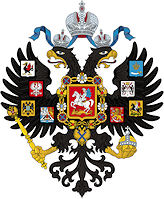
Austausch der Declaration exchanged between Siam and Russia.
1899-06-17

Der Brite John Gordon Drummond Campbell (1864 – 1935) wird Educational Adviser for the Education Department of the Siamese Government.
Abb.: John Gordon Drummond Campbell, 1922
[Bildquelle: Bassano Ltd / National Portrait Gallery, London. -- Creative Commons Lizenz (Namensnennung, keine kommerzielle Nutzung, keine Bearbeitung)]Agreement between Campbell and the Siamese Government 1899-06-17:
[Mr. Campbell agrees] " to give his best consideration to the various matters connected with the Education Department (whether regarding its organization or its administration) which may be brought under his notice and will give such advice and assistance in dealing with these matters as will to the best of his belief conduce to the successful working of the Department. With this object he will consult with the Minister of Education for the time being and will do his utmost to see that the instructions issued by the Minister are carried out whether in Bangkok itself or in the provinces which he may be called upon to visit in the performance of his duties or elsewhere." [Zitiert in: Wyatt, David K. <1937 - 2006>: The politics of reform in Thailand : education in the reign of King Chulalongkorn. -- New Haven : Yale UP, 1969. -- 425 S. : Ill. ; 23 cm. -- (Yale Southeast Asia studies ; 4). -- SBN 300-01156-3. -- S. 266]
1899-07

Frankreich macht Vientiane (ວຽງຈັນ) zur Verwaltungshauptstadt des Protektorats Laos, Luang Prabang (ຫຼວງພະບາງ) bleibt Hauptstadt und Sitz des Königs.
Abb.: Lage von Vientiane (ວຽງຈັນ) und Luang Prabang (ຫຼວງພະບາງ)
[Bildquelle: Wikimedia. -- Public domain]
1899-07-17


Mönchs-Prinz Vajirañāṇavarorasa (วชิรญาณวโรรส, 1880 - 1921) an Dr. Peter Gowan (1847 - 1902):
"His Majesty would not consent and people of the realm would lament if I would make [up] my mind to leave the priesthood. On my part I am very content with the bachelor life that can be best adopted in this manner, for it has the least attachment of all." [Zitiert in: Vajirañāṇavarorasa [วชิรญาณวโรรส] <1880 - 1921>: Autobiography : the life of Prince-Patriarch Vajirañāṇa of Siam, 1860-1921 / translated, edited, and introduced by Craig J. Reynolds. -- Athens : Ohio University Press, 1979. -- 86 S. : Ill. ; 24 cm. -- ISBN 0821403761. -- Originaltitel: พระประวัติตรัสเล่า. -- S. XXXIX]
1899-07-17

Inkrafttreten des Anglo-Japanese Treaty of Commerce and Navigation (日英通商航海条約). Der Vertrag beendet - zusammen mit ähnlichen Verträgen mit den USA, Russland, den Niederlanden und Frankreich - das Zeitalter der ungleichen Verträge und der Extraterritorialität für Japan. Dieser Erfolg Japans wird in Siam als Vorbild gesehen.
Damit wird auch das System der Kontraktausländer (お雇い外国人) beendet, das ebenfalls Siam als Vorbild gedient hat.
"Als o-yatoi gaikokujin (jap. お雇い外国人, „Kontraktausländer“) bezeichnet man im Japanischen ausländische Experten, die in der zweiten Hälfte des 19. Jahrhunderts ins Land gerufen wurden, um die Modernisierung Japans zu beschleunigen. Die „Kontraktausländer“ sollten neue Technologien einführen und japanische Spezialisten ausbilden. Einige waren nebenher auch als Missionare tätig. Mehr als die Hälfte kam aus dem angelsächsischen Raum. Eine Liste vom März 1872 nennt 214 Personen, darunter 119 Engländer, 50 Franzosen, 16 Amerikaner, 9 Chinesen und nur 8 Personen aus Preussen.[1] Diese Tendenz bleibt auch danach in etwa gleich. Für die Zeit von 1868 bis 1889 lassen sich in den Unterlagen der Regierung insgesamt 2690 Personen nachweisen, darunter 1.127 Briten, 414 Amerikaner, 333 Franzosen, 250 Chinesen, 215 Deutsche, und 99 Niederländer.[2] Sie wurden hoch geschätzt und entsprechend entlohnt. Im Jahre 1874 gab es 520 Kontraktausländer, deren Gehälter mit 2,272 Millionen Yen ein Drittel des Jahresetats verschlangen. Entsprechend stark war das Interesse der japanischen Regierung an einer raschen Ablösung durch einheimische Fachkräfte.
Mit dem Ende der Exterritorialität im Jahre 1899 wurde dieses System abgeschafft."
[Quelle: http://de.wikipedia.org/wiki/O-yatoi_gaikokujin. -- Zugriff am 2015-04-29]
1899-07-28

Der deutsche Ministerresident, Conrad Adam Leopold von Saldern (1847 - ), an den deutschen Reichskanzler Chlodwig Carl Viktor Fürst zu Hohenlohe-Schillingsfürst, Prinz von Ratibor und von Corvey (1819 - 1901)
"„Siam ist ein wildes Land und der Charakter des Volkes derart, dass ... hier kaum jemals mehr als ein Schein von
Auch Saldern konnte sich der Beobachtung nicht verschließen, dass mehr und mehr siamesische Prinzen eine Bildung und Ausbildung in Europa und nach europäischem Muster vorweisen konnten, doch das zählte für ihn nicht: die „Intelligenz dieser jungen Asiaten" sei „häufig Flackerfeuer", und, einmal in ihre Heimat zurückgekehrt, dauere es nur kurze Zeit, bis sie „wieder in ihren alten Schlendrian zurückgefallen" seien."
[Quelle: Petersson, Niels P.: Imperialismus und Modernisierung : Siam, China und die europäischen Mächte 1895 - 1914. -- München : Oldenbourg, 2000. -- 492 S. ; 25 cm. -- (Studien zur internationalen Geschichte ; Bd. 11). -- ISBN 3-486-56506-0. -- Zugl.: Hagen, Fernuniv., Diss., 1999. -- S. 134]
1899-08

Der britische Finanzberater Charles James Rivett-Carnac (1853 – 1935) legt eine Denkschrift zu den Steuern vor: der Goldwert der 1856 festgelegten Steurn ist durch den Verfall des Silberkurses um 50% gefallen. Ohne Erhöhung der Grundsteuern bleibe Siam auf die Opium- und Glücksspielsteuern aangewisen, die von Steuerpächtern eingetrieben werden.
1899--08-23


Abb.: Zur Lage Chinas / von J. S. Pughe (1870-1909)
"Putting his foot down. Uncle Sam (to the Powers): Gentlemen, you may cut up this map as much as you like; but remember, I’m here to stay. And that you can’t divide me up into spheres of influence."
[Bilquelle: Puck <New York, USA>. -- 1899-08-23]
1899-08-26

Rama V. an Prinz Damrong [ดำรงราชานุภาพ, 1862 -1943]:
"...general policy towards the Lao tributary states. Item 1. I want to see co-operation as opposed to division between the commissioners and the princes' officials...! want them to form a council similar to those by which the British administer their Malay states. If the Lao are not segregated and are made to co-operate, and if there are consultations and decisions taken in council, then they will not have grounds to complain of a lack of participation in the work of the government. They will also be unable to reverse the decisions taken in council. Furthermore, if they are over-ruled time and again when matters on which decisions cannot be reached are referred to Bangkok, then they will learn not to challenge us.
Item 2. The question of income is important, for the Lao should not be made to feel destitute. I feel that junior officials especially should be given a handsome salary so that they will turn their loyalty towards the central government. Do not make them feel that their work will not be rewarded because they are Lao. If all the junior officials are loyal then the senior officials cannot become all that powerful. Never allow them to consult with each other."
[Quelle: Tej Bunnag [เตช บุนนาค] <1943 - >: The provincial administration of Siam from 1892 to 1915 : a study off the creation, the growth, the achievements, and the implications for modern Siam, of the ministry of the interior under prince Damrong Rachanuphap. -- Diss. Oxford : St. Anthonys College, Michaelmas Term 1968. -- 429 S., Schreibmaschinenschrift. -- S. 259. -- Faire use]
1899-09-06


US-Außenminister John Hay (1838 - 1905) fordert die Politik der Offenen Tür in China. Dazu fordert er auf Frankreich, Deutschland, Großbritannien, Italien und Russland.
"Earnestly desirous to remove any cause of irritation and to insure at the same time to the commerce of all nations in China the undoubted benefits which should accrue from a formal recognition by the various powers claiming "spheres of interest" that they shall enjoy perfect equality of treatment for their commerce and navigation within such "spheres," the Government of the United States would be pleased to see His German Majesty's Government give formal assurances, and lend its cooperation in securing like assurances from the other interested powers, that each, within its respective sphere of whatever influence-- First. Will in no way interfere with any treaty port or any vested interest within any so-called "sphere of interest" or leased territory it may have in China.
Second. That the Chinese treaty tariff of the time being shall apply to all merchandise landed or shipped to all such ports as are within said "sphere of interest" (unless they be "free ports"), no matter to what nationality it may belong, and that duties so leviable shall be collected by the Chinese Government.
Third. That it will levy no higher harbor dues on vessels of another nationality frequenting any port in such "sphere" than shall be levied on vessels of its own nationality, and no higher railroad charges over lines built, controlled, or operated within its "sphere" on merchandise belonging to citizens or subjects of other nationalities transported through such "sphere" than shall be levied on similar merchandise belonging to its own nationals transported over equal distances. "
[Open Door Note an Großbritannien]
1899-09-30

Sitzung der geistlichen Erziehungsdirektoren
"Discussion at the first of these sessions, on 30 September, centered on a question raised by virtually all of the directors, stated simply by Phra Methathammarot, director for monthon Nakhon Sawan [มณฑลนครสวรรค์], in the following terms: "The work which I have done so far leads me to conclude that education and religious affairs are one and the same matter: each is dependent on the other. When the Sangha is in order, then may education progress."
The directors saw the necessity for a firm structuring of the Sangha [พระสงฆ์] from top to bottom, making ecclesiastical and civil jurisdictions coincide geographically as well at the subdistrict or commune (tambon [ตำบล]) level as at the level of the monthon [มณฑล], thereby eliminating the older ecclesiastical hierarchy by which the Sangha was divided by sects (and even notional sects) without regard for geography. They wished to see all monks in any locality grouped under a single chaokhana [เจ้าคณะ] or "Sangha chairman," the chaokhana tambon [เจ้าคณะตำบล] to be responsible to the chaokhana amphoe [เจ้าคณะอำเภอ], and so forth up to a national Sangha council [มหาเถรสมาคม]."
[Quelle: Wyatt, David K. <1937 - 2006>: The politics of reform in Thailand : education in the reign of King Chulalongkorn. -- New Haven : Yale UP, 1969. -- 425 S. : Ill. ; 23 cm. -- (Yale Southeast Asia studies ; 4). -- SBN 300-01156-3. -- S. 247]
1899-10-11 - 1902-05-31
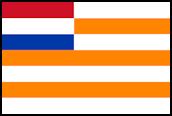
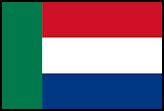

Zweiter Burenkrieg der südafrikanischen Burenrepubliken Oranje-Freistaat und Südafrikanische Republik (Transvaal) gegen die Kolonialmacht Großbritannien.
Abb.: Lage von Oranje-Freistaat und Südafrikanische Republik 1895
[Bildquelle:
1899-10-23

Die deutsche Kaiserliche Marine zeigt gegenüber dem Auswärtigen Amt Interesse am Erwerb der Insel Pulau Langkawi im siamesischen Sultanat Kedah [قدح] als Marinestützpunkt. Das Auswärtige Amt befürchtet den Widerstand Großbritanniens und sieht keine Möglichkeit, die Insel zu kaufen oder zu pachten.
Abb.: Lage von Pulau Langkawi, heutige Staatsgrenzen
[Bildquelle: OpenStreetMap. -- Creative Commons Lizenz (Namensnennung, share alike)]
1899-10-26

Abb.: "Das Wunderland des weißen Elefanten". -- In: Illustrirte Zeitung <Leipzig, Deutschland>. -- Nr. 2939. -- 1899-10-26. -- S. 577
1899-11-07


Eugène Ètienne (1844 - 1921), Führer der französischen colonial parti, fordert in einem Zeitungsartikel in Le Figaro den französischen Außenminister, Théophile Delcassé (1852 - 1923), auf, von Großbritannien Unterstützung Frankreichs in den Forderungen in Marokko und Siam zu fordern als Gegenleistung dafür, dass sich Frankreich aus dem Burenkrieg (1899 bis 1902 ) heraushält.
Abb.: Antibritische deutsche Postkarte zum Burenkrieg, 1899/1902"Wir sinken nicht auf' Knie
Vor Königsthronen, wenn's verlangt,
Dies tun wir frei vor Gott dem Herrn
Vor ihm allein, und uns nicht bangt!
1899-11-09


Mönchs-Prinz Vajirañāṇavarorasa (วชิรญาณวโรรส, 1880 - 1921) schickt an Dr. Peter Gowan (1847 - 1902) Bunyan, John <1628 - 1688>: The Pilgrim’s progress from this world to that which is to come zurück mit den Worten:
"I also return your book entitled Pilgrim’s Progress with my remarks prefaced to it. Why I did so? If I wrote my remarks here, I should probably accuse you to be a Christian and so stupid as to try to convert me, the man of common sense." [Zitiert in: Vajirañāṇavarorasa [วชิรญาณวโรรส] <1880 - 1921>: Autobiography : the life of Prince-Patriarch Vajirañāṇa of Siam, 1860-1921 / translated, edited, and introduced by Craig J. Reynolds. -- Athens : Ohio University Press, 1979. -- 86 S. : Ill. ; 24 cm. -- ISBN 0821403761. -- Originaltitel: พระประวัติตรัสเล่า. -- S. XXXIX]
1899-11-15

Mönchs-Prinz Vajirañāṇavarorasa (วชิรญาณวโรรส, 1880 - 1921) an den König:
"Generally speaking, I agree with the secular ideal of Patriotism and the moral duty of acting on behalf of both oneself and others, but this can be done only in accordance with one’s strength. Nowadays, I am worn out. One could almost say I have no strength left to do your bidding in anything. . . . Since you appointed me eighteen years ago to be deputy patriarch of the Dhammayut order [ธรรมยุติกนิกาย], I have not had time to rest. . . . I am worn down physically and troubled mentally. My energy fails and does not return. Work on the Pali canon is not yet finished. The Prince-preceptor [Pavares Variyalongkorn - สมเด็จพระมหาสมณเจ้า กรมพระยาปวเรศวริยาลงกรณ์, 1809 - 1892] has died, and I must be abbot of Wat Pavara [วัดบวรนิเวศวิหาร] and improve it. It deteriorated when the Prince-preceptor reached old age. I had hardly accomplished anything, and then the Mahamakuta Royal Academy [มหาวิทยาลัยมหามกุฏราชวิทยาลัย] started up. At the present time much physical and mental effort is demanded of me to the point where I now have insomnia. I had almost completed some work last year, and then you gave me the additional responsibility for provincial education. One thing at a time is no bother. Heavy work can be done if it is sporadic. Routine work is easily managed. But because there are not enough subordinates, I must do everything myself, and it comes steadily along, leaving me no rest. In addition to these larger tasks there are other things—such as the textbooks that have to be written—so that I cannot do or supervise all the work thoroughly. Both the work to be done and myself are ruined. . . .
From the time I have been so worn out, I have observed that my mind isn’t so nimble as it used to be. My thoughts come more slowly. When I set out to write something or ponder something, it doesn’t come easily. I go around in circles. When I speak to someone I am not satisfied with what I say. Afterwards, I realize what I should have said. This has never happened to me before. I think my mental energy is spent."
[Übersetzung: Vajirañāṇavarorasa [วชิรญาณวโรรส] <1880 - 1921>: Autobiography : the life of Prince-Patriarch Vajirañāṇa of Siam, 1860-1921 / translated, edited, and introduced by Craig J. Reynolds. -- Athens : Ohio University Press, 1979. -- 86 S. : Ill. ; 24 cm. -- ISBN 0821403761. -- Originaltitel: พระประวัติตรัสเล่า. -- S. 41]
1899-12-08 - 1901-02-18

James Alexander Swettenham (1846-1933) ist British High Commissioner in Malaya
1899-12-17
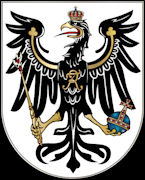
Prinz Heinrich von Preußen (1862 - 1929) trifft in Siam ein.
Abb.: Preußen 1871
[Bildquelle: Pickup / Wikipedia. -- Creative Commons Lizenz (Namensnennung, share alike)]
Abb.: Prinz Heinrich von Preußen als Kommandant des II. Deutschen Kreuzergeschwaders in Kiautschou ( 膠州, China)
[Reklame-Sammelbild, ca. 1900]
1899-12-21


Der US-Gesandte Hamilton King [1852 - 1912] an Außenminister John Milton Hay (1838 - 1905):
... noted "Siam’s uneasiness under extraterritorial jurisdiction when she realizes her own progress and Japan’s recently acquired freedom." [Zitiert in: Batson, Benjamin Arthur <1942 - >: The end of the absolute monarchy in Siam. -- Singapore : Oxford Univ. Pr., 1984. -- 349 S. : Ill. ; 22 cm. -- (Southeast Asia publications series ; no. 10). -- ISBN 0-19-582612-4. -- S. 16]
1899-12-29
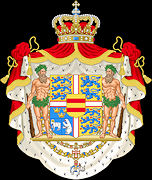
Prinz Valdemar von Dänemark (1858 - 1939) trifft in Siam ein.
Abb.: Dänemark 1899
[Bildquelle: The Century atlas of the World. -- New York, 1901]
Abb.: Prinz Valdemar von Dänemark mit Rama V.
[Bildquelle: Wikipedia. -- Public domain]
|
1899-Ende
|
ausführlich: http://www.payer.de/thailandchronik/ressourcen.htm
Phongpaichit, Pasuk <ผาสุก พงษ์ไพจิตร, 1946 - > ; Baker, Chris <1948 - >: Thailand : economy and politics. -- Selangor : Oxford Univ. Pr., 1995. -- 449 S. ; 23 cm. -- ISBN 983-56-0024-4. -- Beste Geschichte des modernen Thailand.
Ingram, James C.: Economic change in Thailand 1850 - 1870. -- Stanford : Stanford Univ. Pr., 1971. -- 352 S. ; 23 cm. -- "A new edition of Economic change in Thailand since 1850 with two new chapters on developments since 1950". -- Grundlegend.
Akira, Suehiro [末廣昭] <1951 - >: Capital accumulation in Thailand 1855 - 1985. -- Tokyo : Centre for East Asian Cultural Studies, ©1989. -- 427 S. ; 23 cm. -- ISBN 4896561058. -- Grundlegend.
Skinner, William <1925 - 2008>: Chinese society in Thailand : an analytical history. -- Ithaca, NY : Cornell Univ. Press, 1957. -- 459 S. ; 24 cm. -- Grundlegend.
Mitchell, B. R. (Brian R.): International historical statistics : Africa and Asia. -- London : Macmillan, 1982. -- 761 S. ; 28 cm. -- ISBN 0-333-3163-0
Kludas, Arnold <1929 - >: Die Seeschiffe des Norddeutschen Lloyd 1857 bis 1970. -- Augsburg : Bechtermünz, 1998. -- 165 + 168 S. : Ill ; 28 cm. -- ISB 3-86047-262-3. -- Standardwerk.
Ongsakul, Sarassawadee <สรัสวดี อ๋องสกุล>: History of Lan Na / translated by Chitraporn Tanratanakul. -- Chiang Mai : Silkworm, 2005. -- 328 S. : Ill. ; 23 cm. -- ISBN974-9575-84-9. -- Originaltitel: ประวัติศาสตร์ลัานนา (2001)
Barmé, Scot: Woman, man, Bangkok : love, sex, and popular culture in Thailand. -- Lanham : Rowman & Littlefield, 2002. -- 273 S. : Ill. ; 24 cm. -- ISBN 0-7425-0157-4
Van Beek, Steve <1944 - >: Bangkok, then and now. -- 2. ed. -- Nonthaburi : AB Publications, 2001. -- 131 S. : Ill. 22 x 29 cm. -- ISBN: 974-87616-0-6
ศกดา ศิริพันธุ์ = Sakda Siripant: พระบาทสมเด็จพระจุลจอมเกล้าเจ้าอยู่หัว พระบิดาแห่งการถ่ายภาพไทย = H.M. King Chulalongkorn : the father of Thai photography. -- กรุงเทพๆ : ด่านสุทธา, 2555 = 2012. -- 354 S. : Ill. ; 30 cm. -- ISBN 978-616-305-569-9